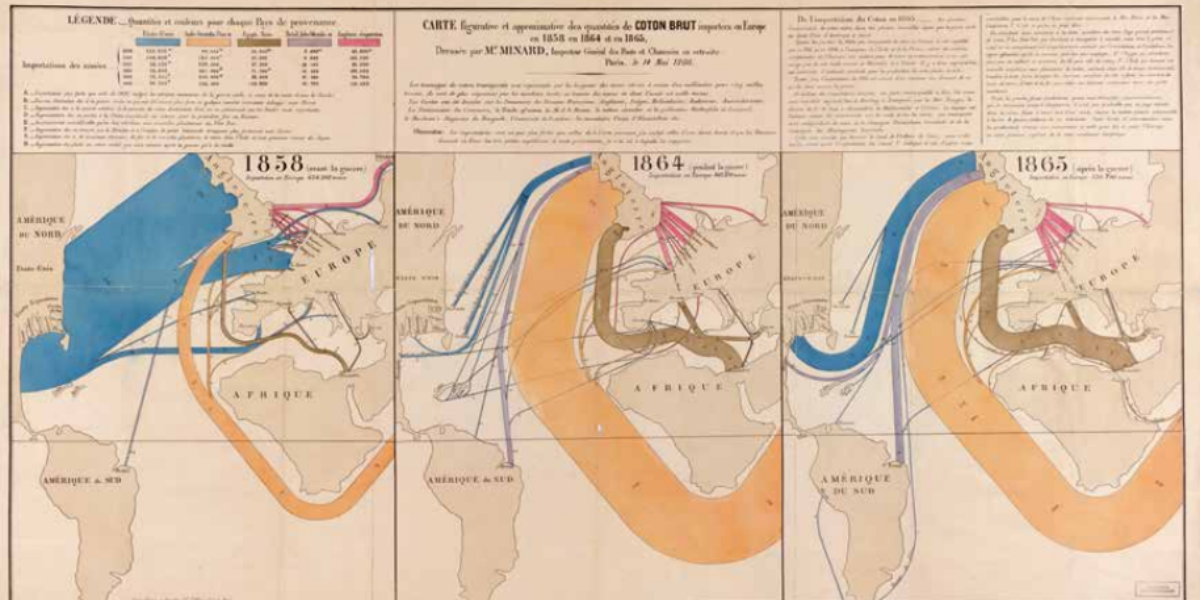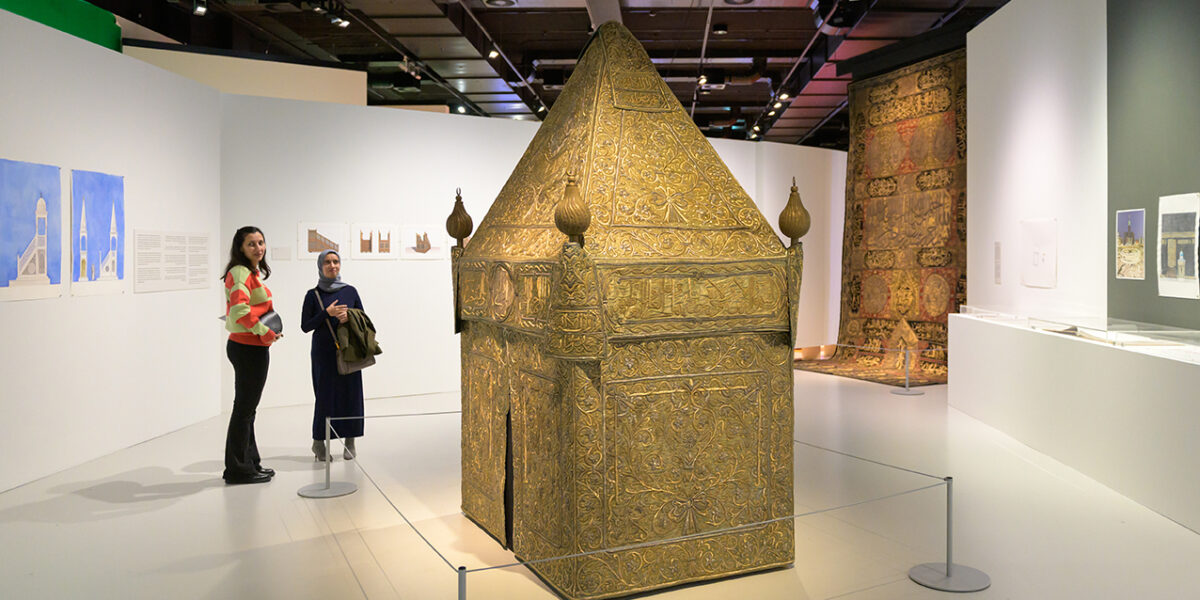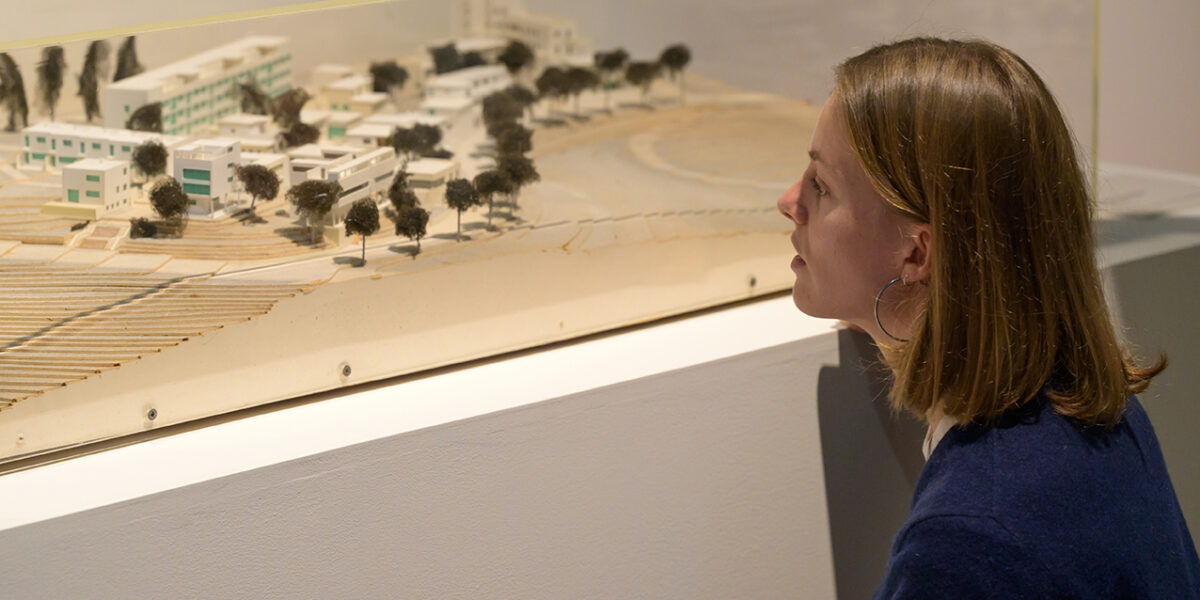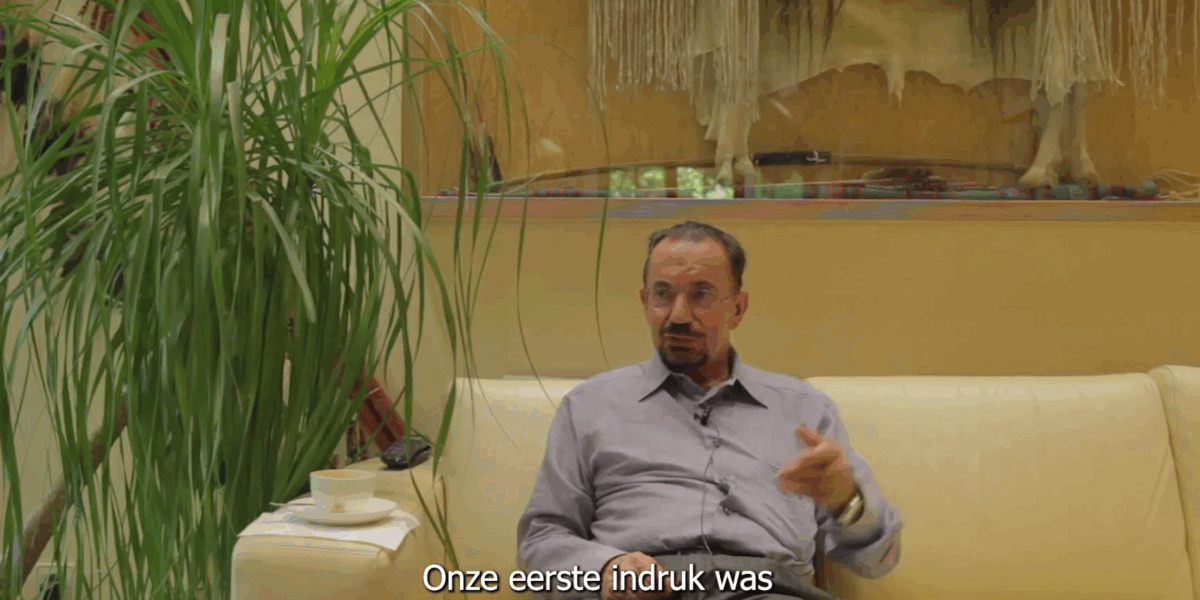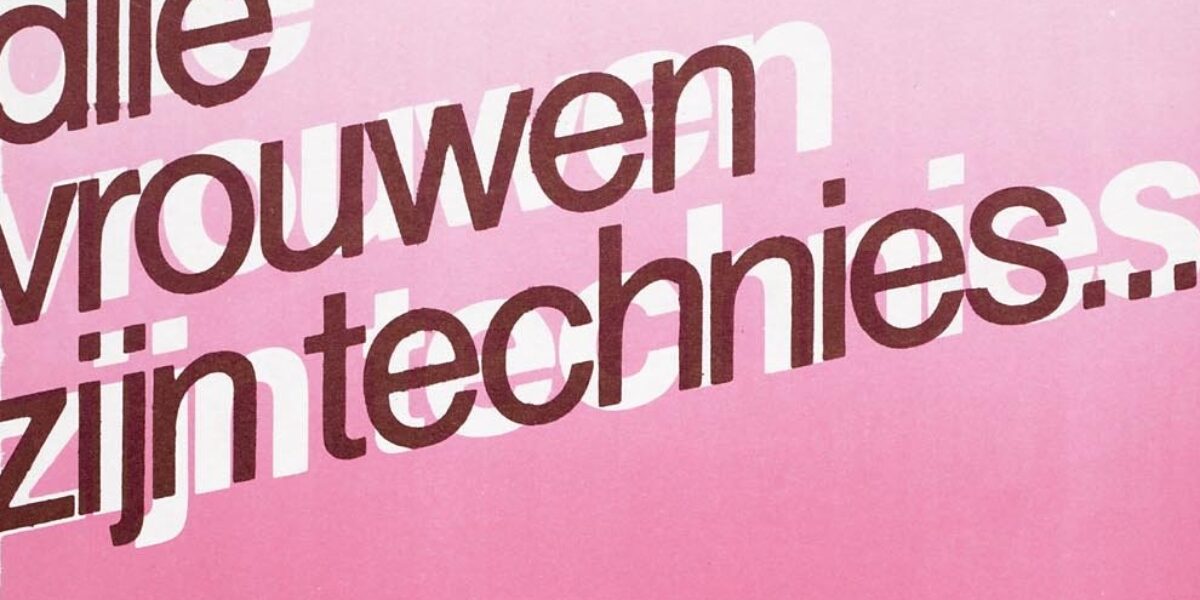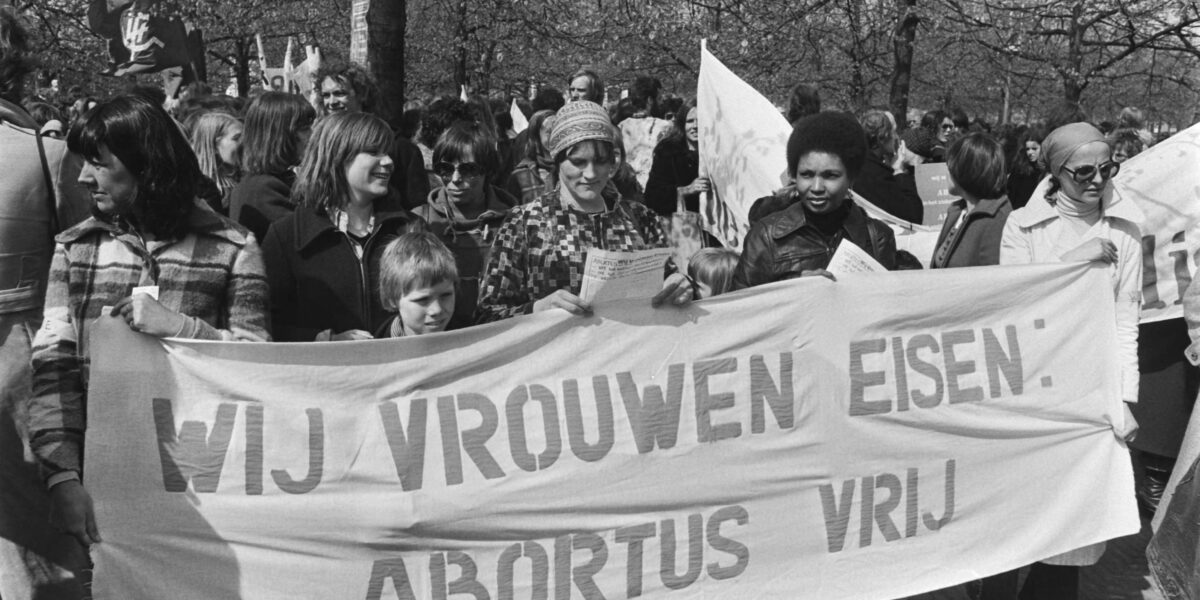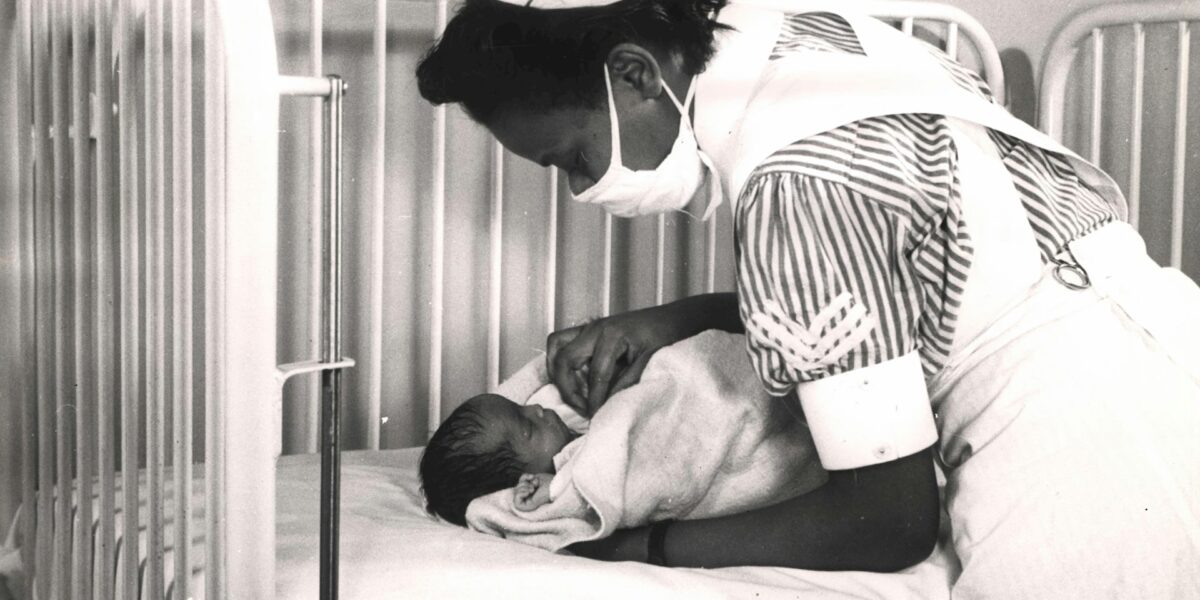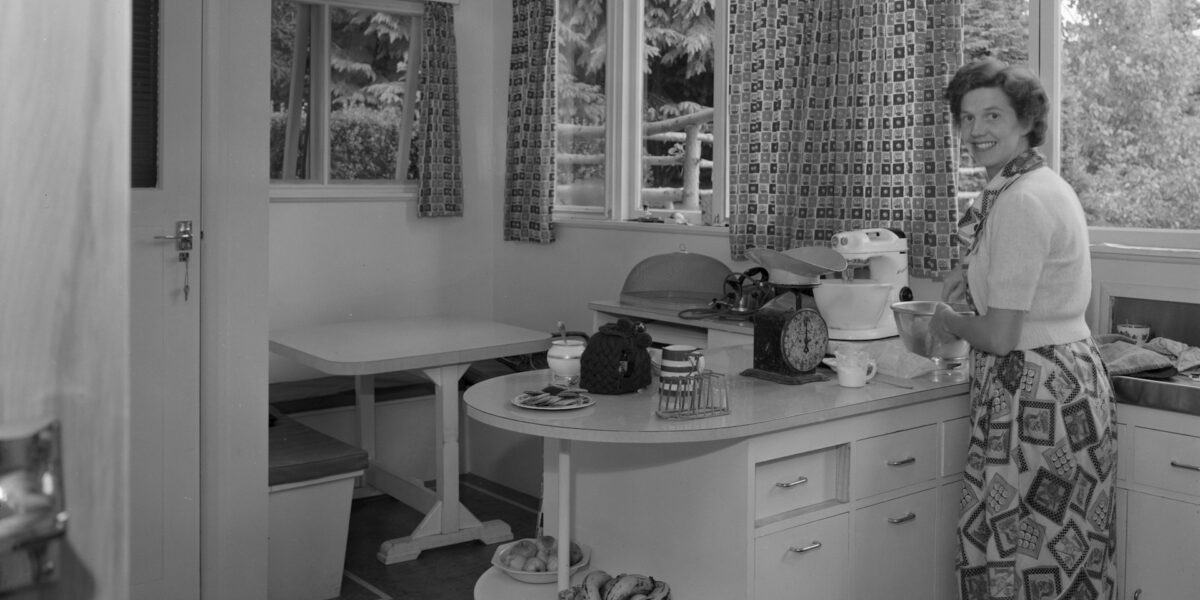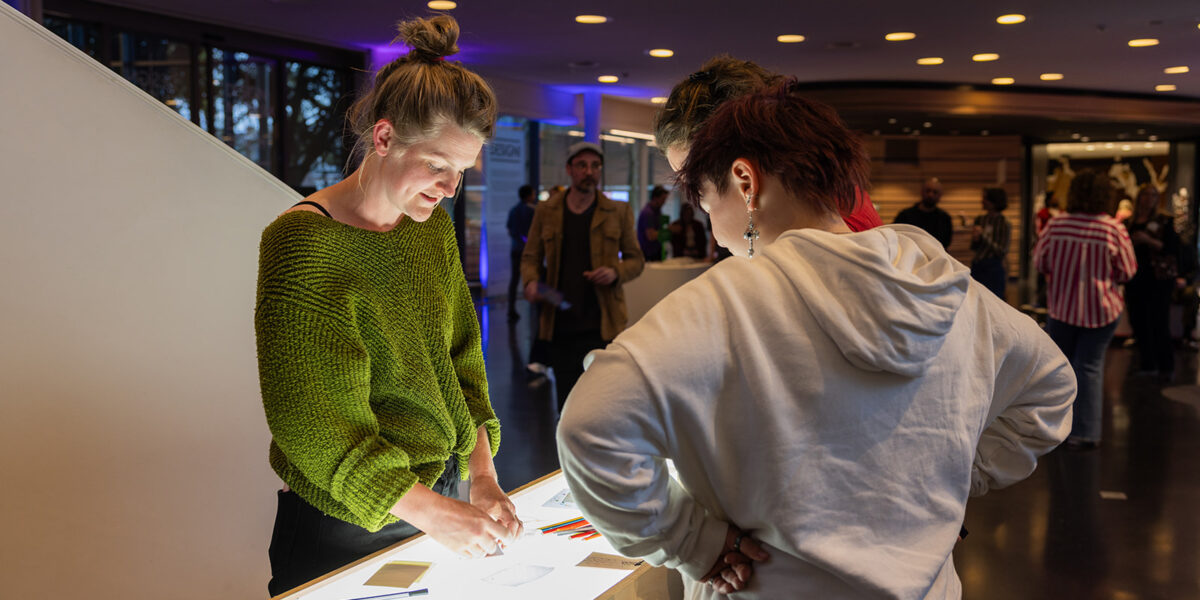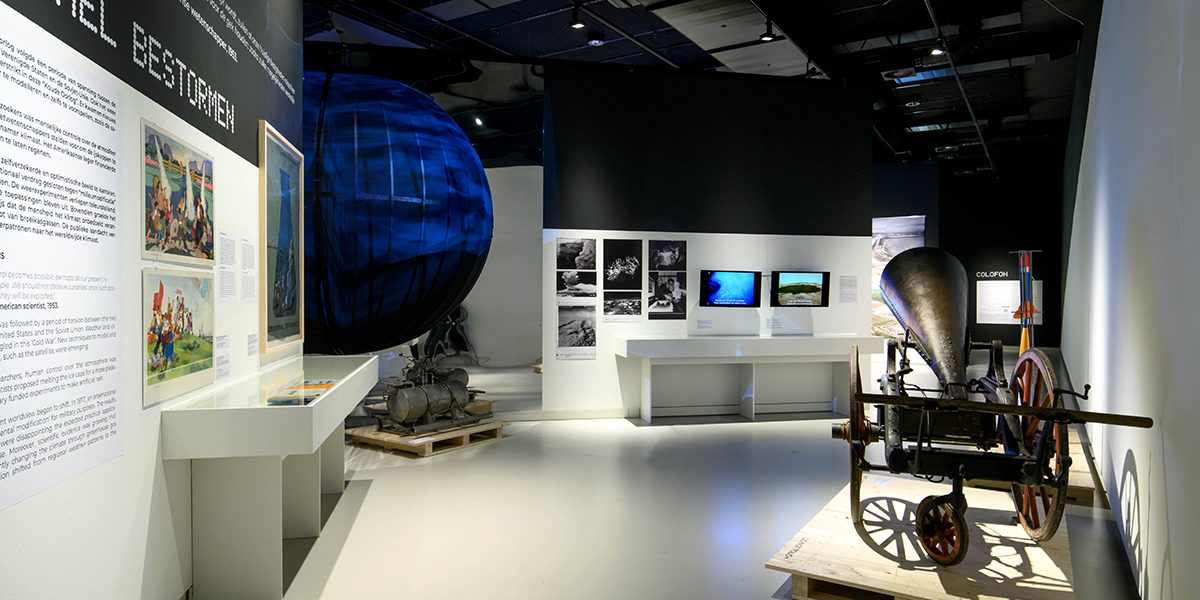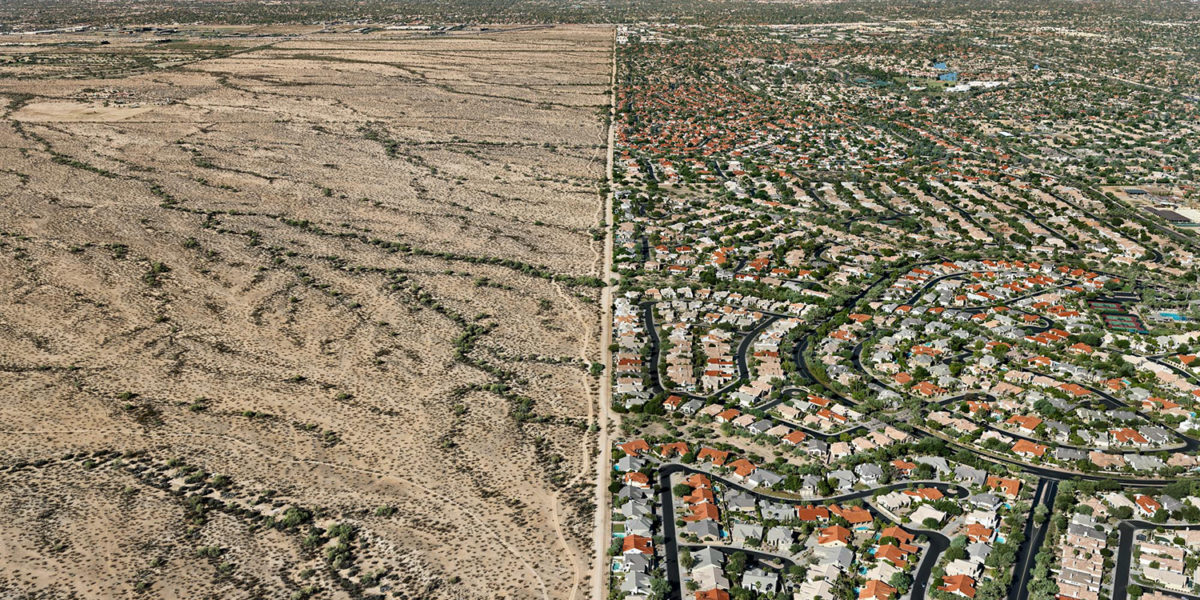Designing the Nation State
The exhibition Designing the Nation State explores the relationship between design and the nation state for the first time. What is a state, who has the right to establish one, and what designs are needed to do so? How does something become a national symbol, and who gets to decide?
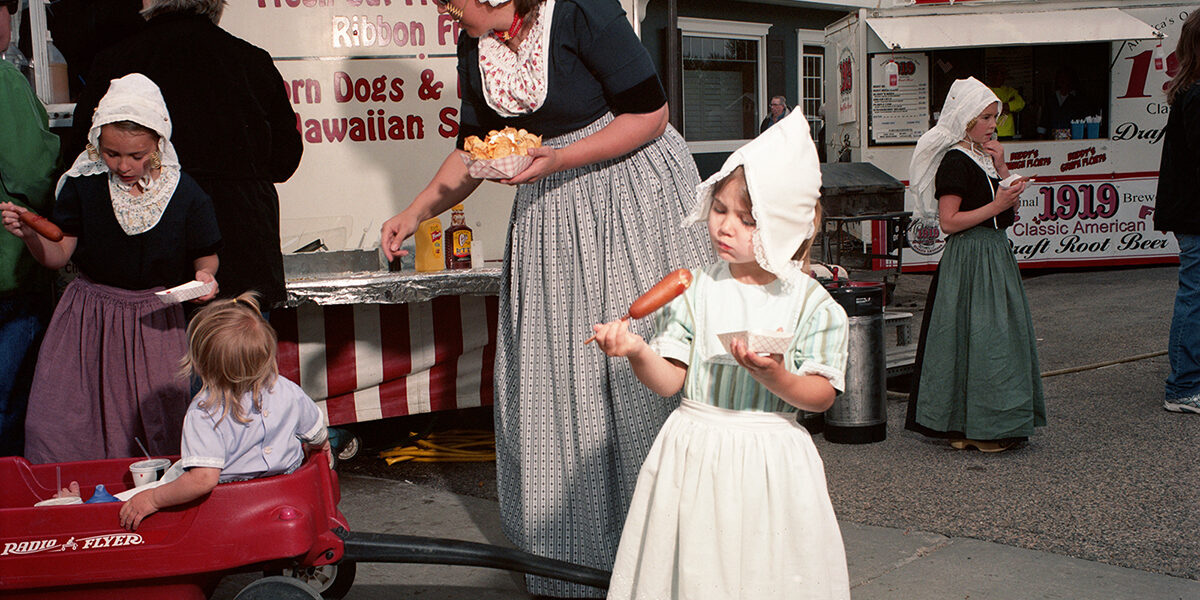
In Shape
The body is where design, fashion, and social norms intersect, and underwear has always played a major role in that. This exhibition was created in collaboration with the Dirk-Jan List collection, and reveals how, through the centuries, we have shaped our bodies not only with textiles and technology, but also through power, identity, and desire.
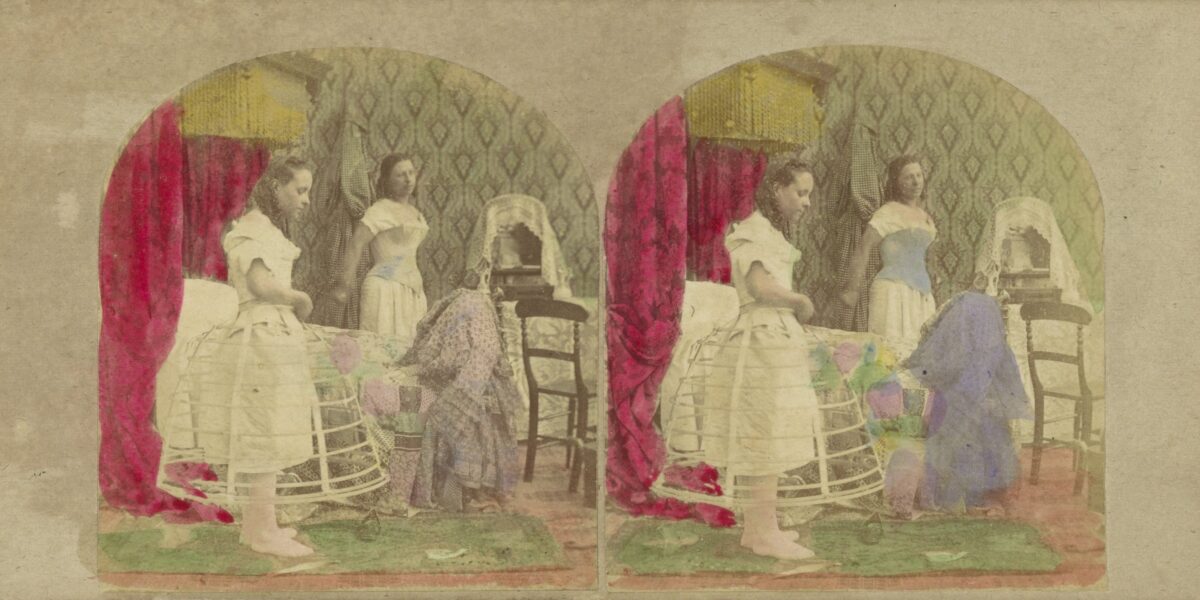
Cosplay
Cosplay (a contraction of the words costume and play) is a subculture in which people dress up as their favorite characters from films, books, games or comic books. But it encompasses much more than that: cosplay represents a global youth culture, a commercial success, the ultimate expression of fandom and subversive and creative play. Millions of people worldwide are involved in cosplay.

Ceramics display: Martijn Verzijl – A Hairy Situation
Design Museum Den Bosch proudly presents the ceramic work of young Den Bosch artist Martijn Verzijl (1999). This is Verzijl’s first solo museum presentation, who alongside his artistic practice also works as a gallery attendant at the museum. In the ceramics cabinet at the top of the museum’s monumental spiral staircase, you’ll discover a small but exquisite selection of work that Verzijl created in 2024 and 2025.
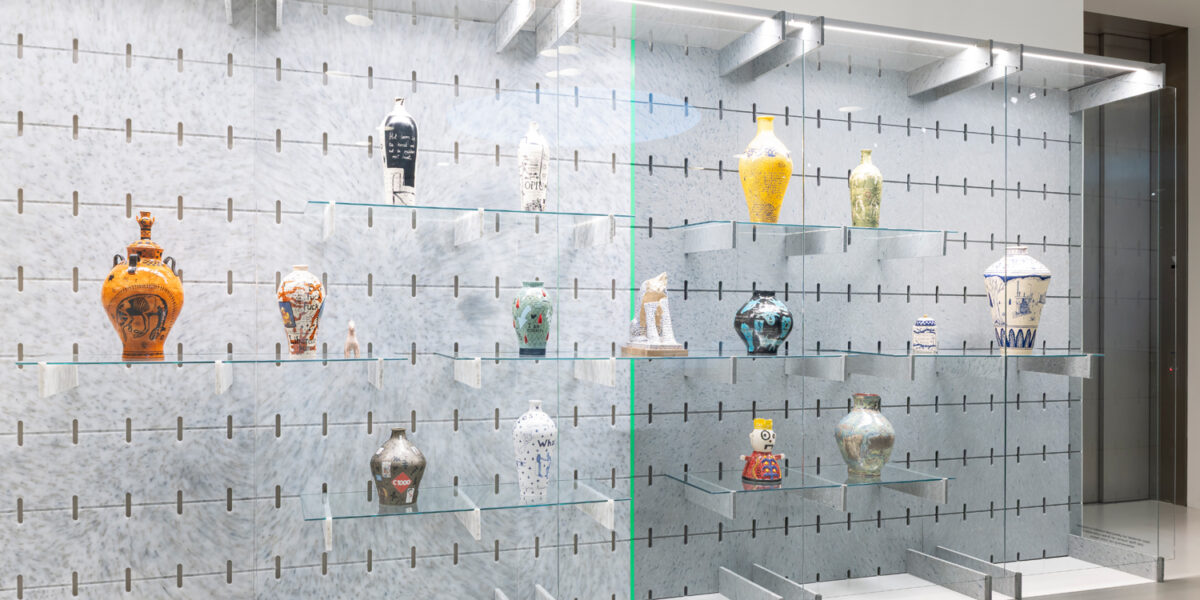
Researcher and curator Lua Vollaard wrote an exclusive article for the Third Floor about her findings from the archival research on the Philips semiconductor factory in Nijmegen. How did the “neat girls” with “manual skills,” who played a crucial role in making microchips in Nijmegen, disappear from the history books?
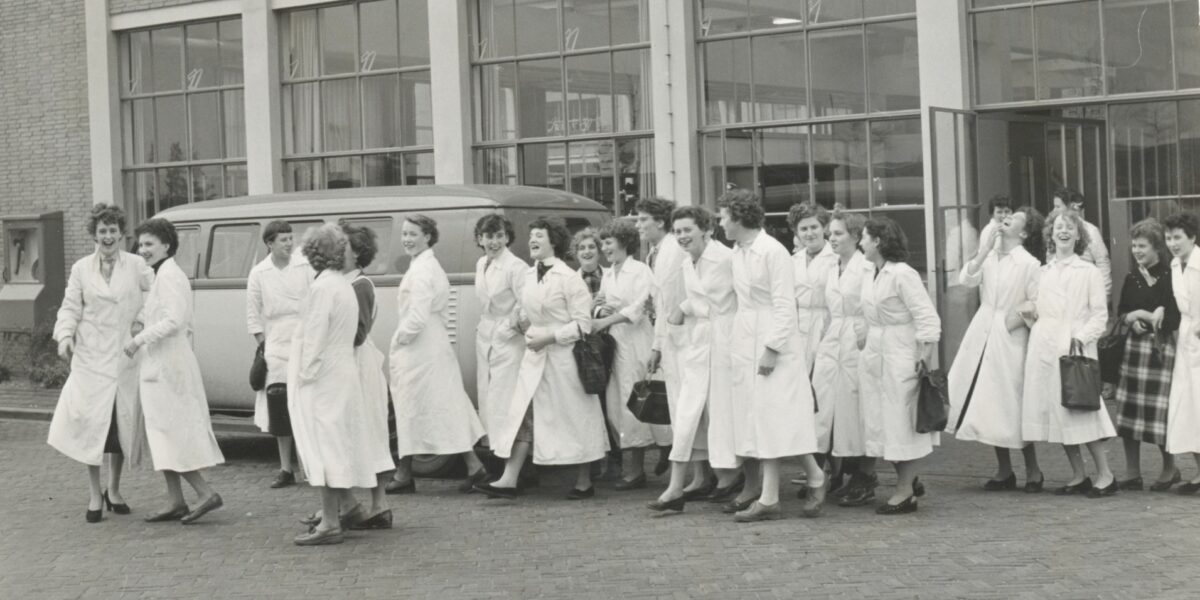
Tim Gouw is a writer and stay-at-home dad. He writes and speaks about (equal) parenthood and the division of roles that comes with it. Exclusively for the Third Floor, he wrote an essay within the framework of the subtheme Women as Homemakers from the exhibition Women as Technology. He wonders: if artificial intelligence (AI) is…
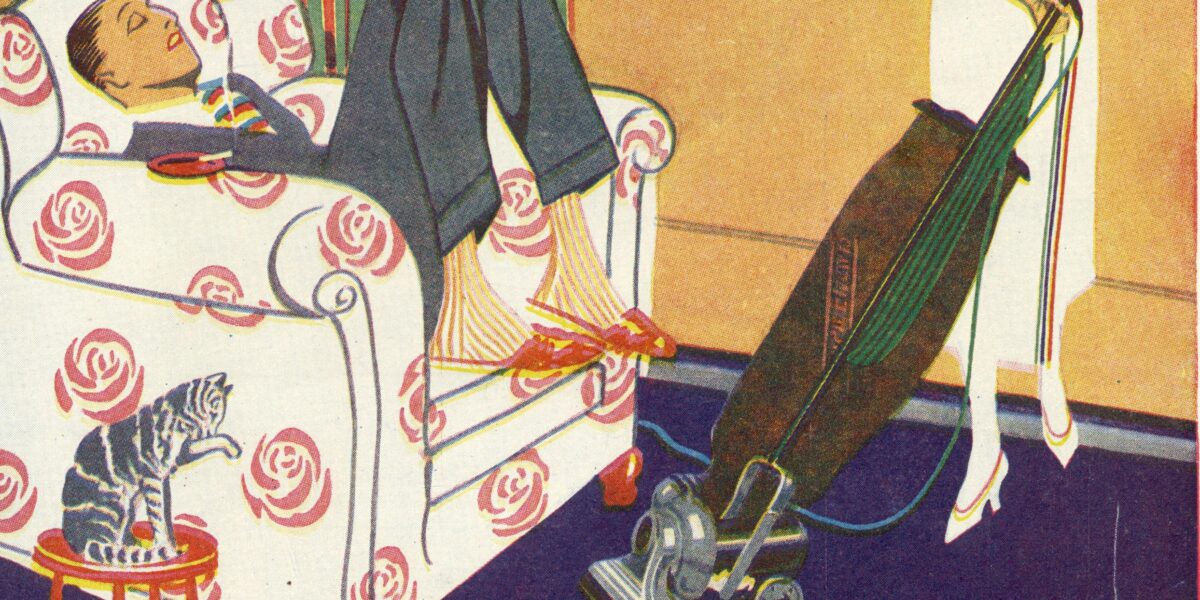
Thijs Gras is a historian and ambulance paramedic. He has published several books on the history of ambulance care, but he also maintains a particular interest in the history of incubators. Exclusively for the Third Floor, he wrote an article on the phenomenon of the ‘incubator as attraction’, in conjunction with the exhibition Women as Technology.
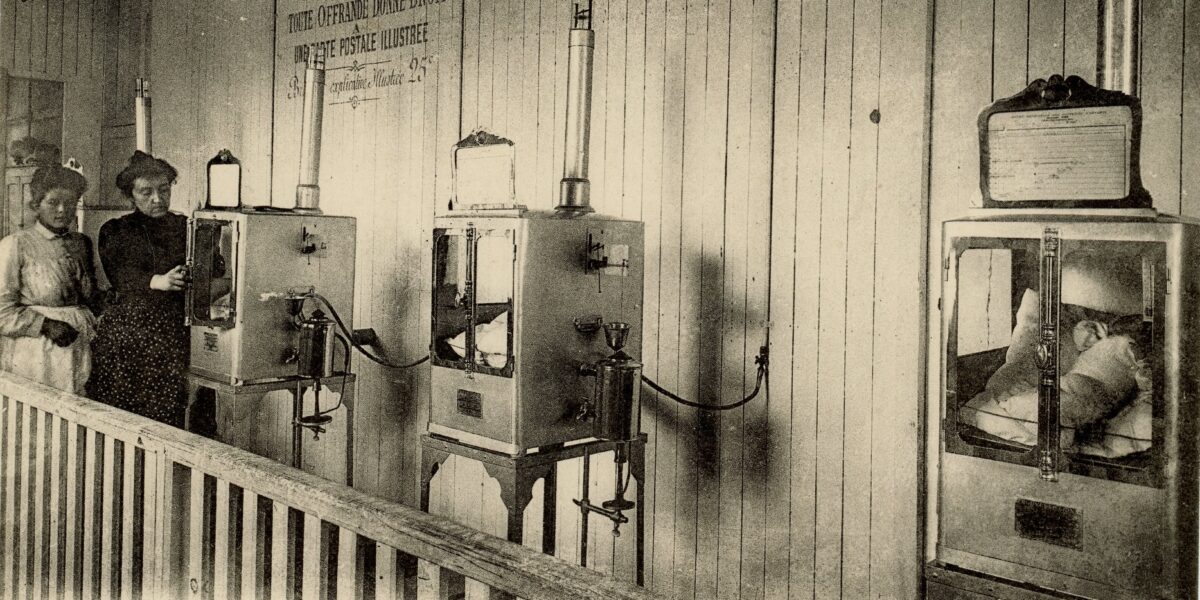
This is so tomorrow
In this jewellery presentation, you will discover works by designers from the collection of Design Museum Den Bosch. These designers explore, in diverse ways, the relationship between the body and technology, nature, identity and culture.

The Surface Decoration Ball
Design Museum Den Bosch holds an international collection of artists’ ceramics, created almost entirely in the twentieth and twenty-first centuries. This exhibition presents some of the museum’s most beautiful and important pieces, featuring leading works by world-renowned artists as well as highlights from the Netherlands.
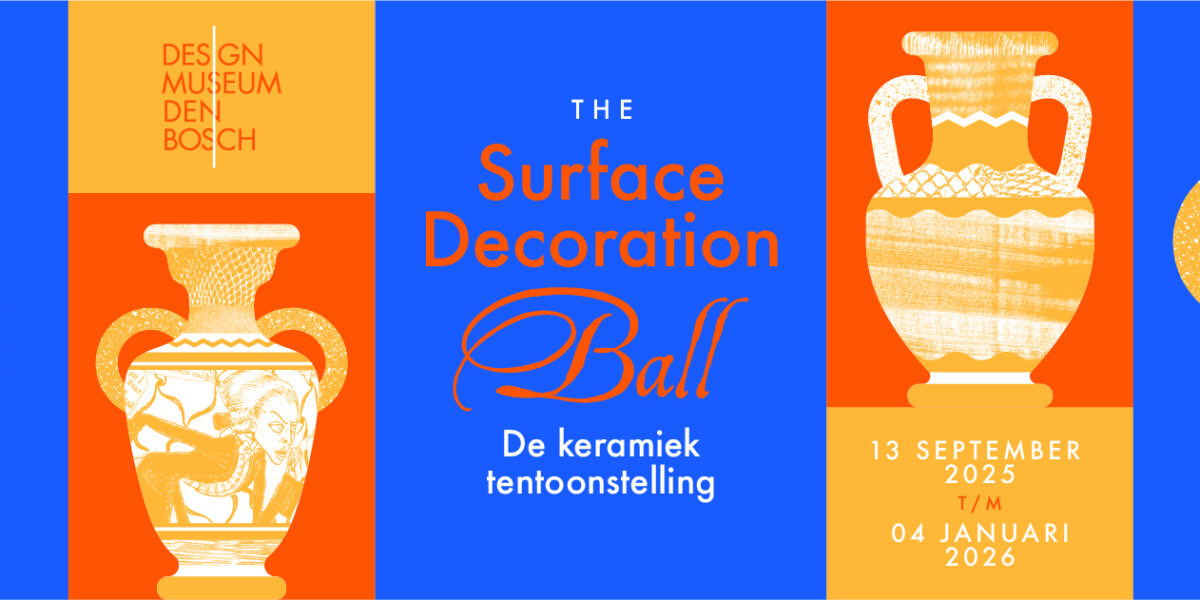
Design prize 2025
Design Museum Den Bosch is proud to present the work of three talents from the Brabant design world, selected by Niels van Eijk and Miriam van der Lubbe, winners of the Design Prize for 2025.
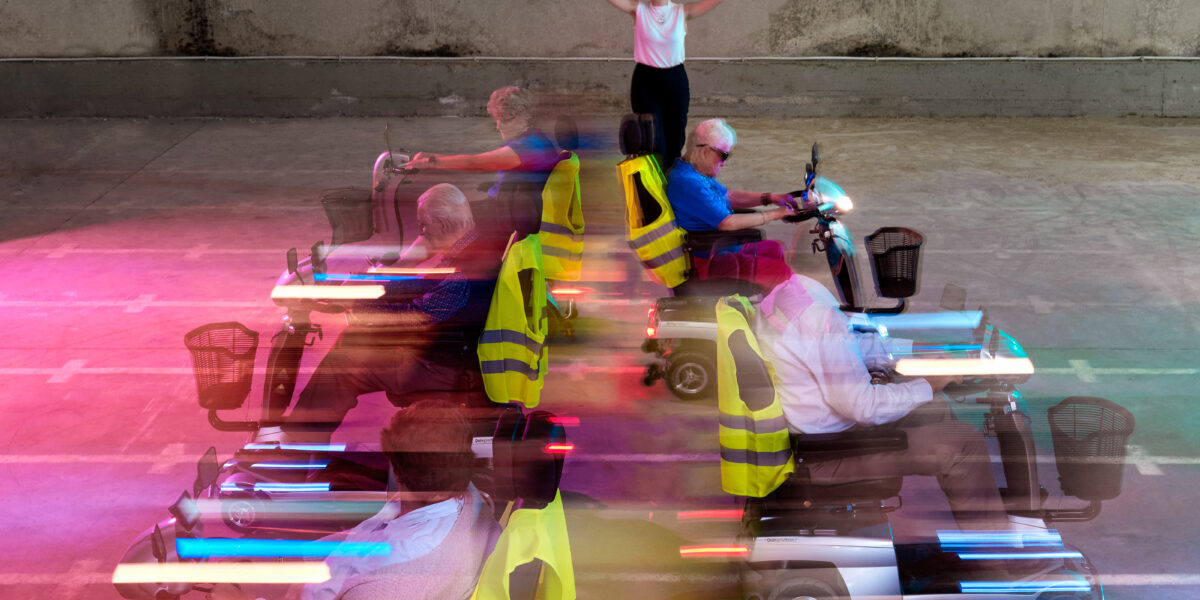
From art academy to museum
The ceramics cabinet on the museum’s second floor is showing a selection of ceramics collected by Jan van Haaren. You will find work here by Dutch ceramists such as Etie van Rees and Jan van der Vaart, but also big European names like Lucie Rie and Lucio Fontana.
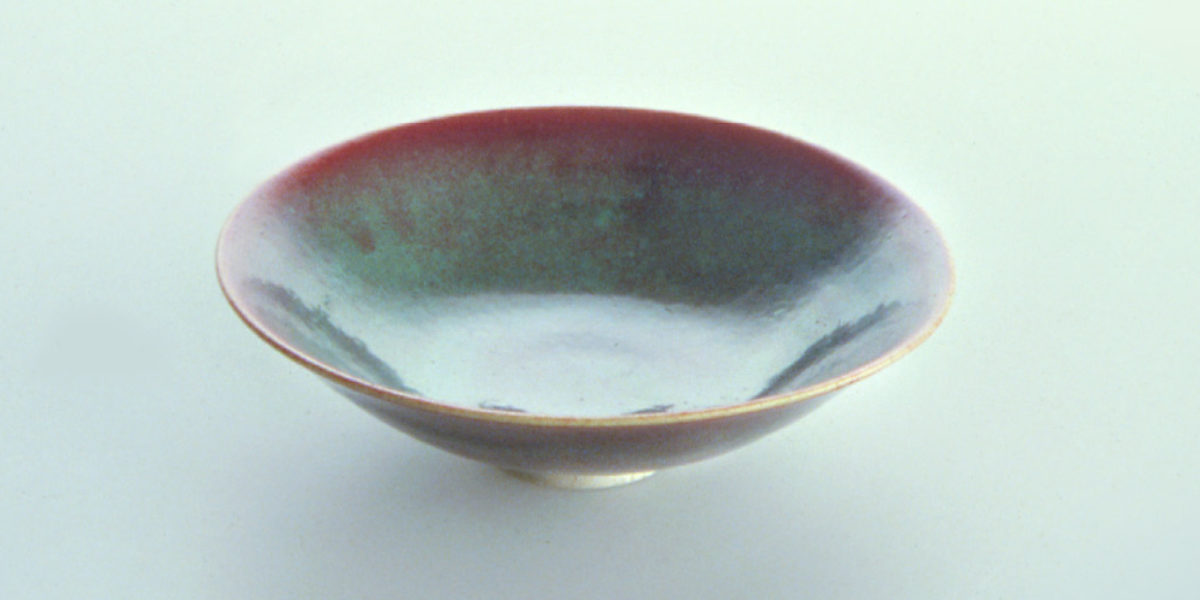
From Bauhaus to Mecca
From Bauhaus to Mecca focuses on the life’s work of Dr Mahmoud Bodo Rasch. His work gives the opportunity to investigate the modern world of design and architecture. You can discover how the enormous social phenomenoms as the Islamitic pilgrimage the Hajj is connected with design.

Women as technology
Why is it that virtual assistants like Siri, Alexa and Cortana often have a female-sounding name and voice? Why was it that in the 1940s the calculating power of computers was expressed in ‘girl hours’? Discover it in the exhibition Women as technology.

All the time in the world
How do we measure time? And above all, how do we shape it? What do ‘being productive’ and ‘getting the maximum out of your day’ actually mean? All the time in the world pauses time for a moment so we can take a closer look at it.
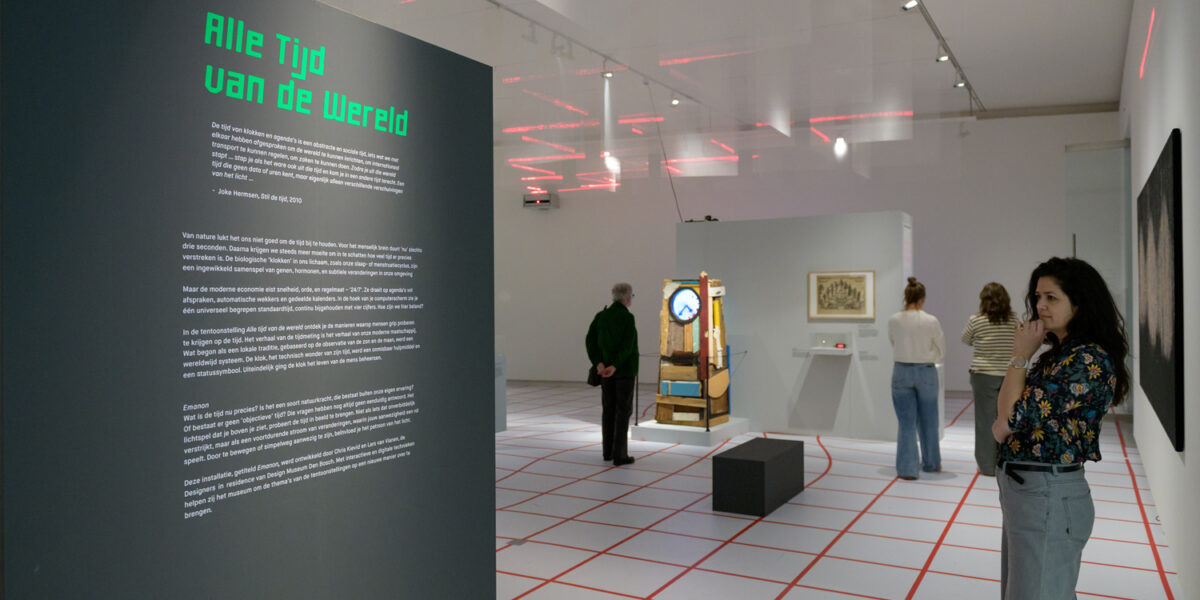
Soft Spaces: Beyond the glitter
The presentation is the result of a unique co-creation process in which groups from the city have teamed up with textile artists to develop a ‘soft space’ together. For this second round of Soft Spaces, the Drag Up Family worked with the textile artist Yamuna Forzani. The result is an artistic living room in which you will discover the local drag collective’s experiences.

Trans Europa Design Express – a journey through five design collections
This exhibition offers a thrilling tour of five major European design collections. The choices vary widely, reflecting the history of these high-profile institutions.
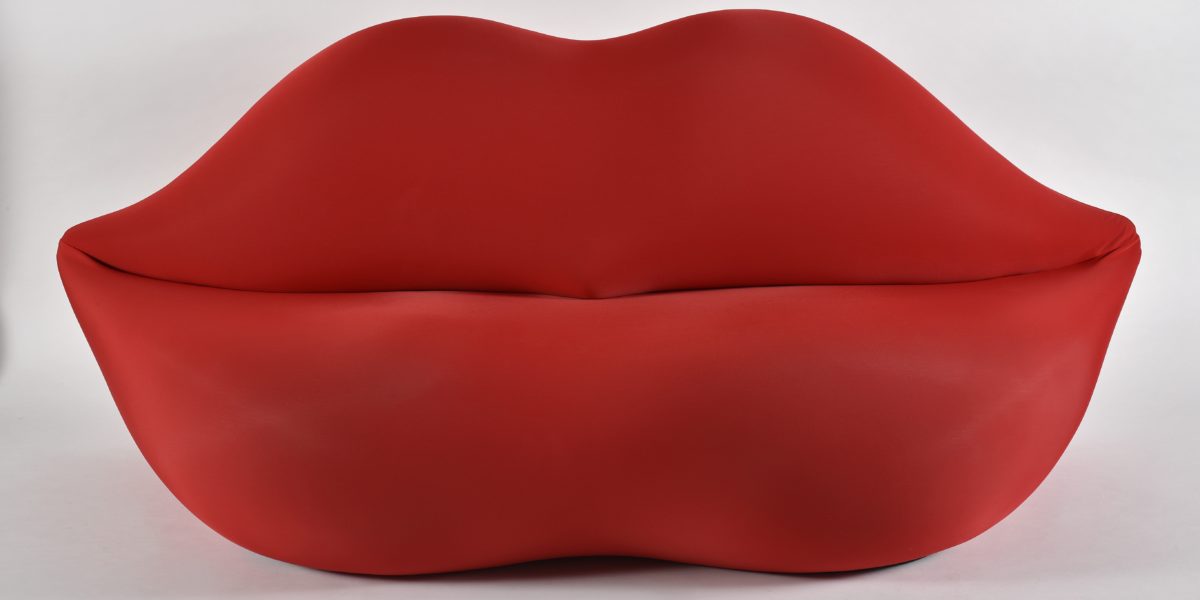
Soft Spaces: Dug-out
For the past three months, eleven young people drawn from the network of the youth support organization PowerUp073 have been working on a Soft Space of their own with the fashion designer Baby Reni.

Supreme – Resampling the World
For many young people, it’s a well-known and coveted logo: the white letters on a bright red surface of the skate brand Supreme. For older generations, the Supreme universe of drops, camping, resellers, hypebeasts, logomania, and collaborations is a completely unknown world. Design Museum Den Bosch now presents the first museum exhibition of the Supreme brand

Design for the planet
Designers, architects and engineers have dreamed for centuries of shaping our world. What if we could build entire continents, tame hurricanes, or dim the sun’s radiation? This kind of large-scale, deliberate intervention in nature is also referred to as ‘geoengineering’: the alteration, construction and design of the earth itself. The design and history of the…
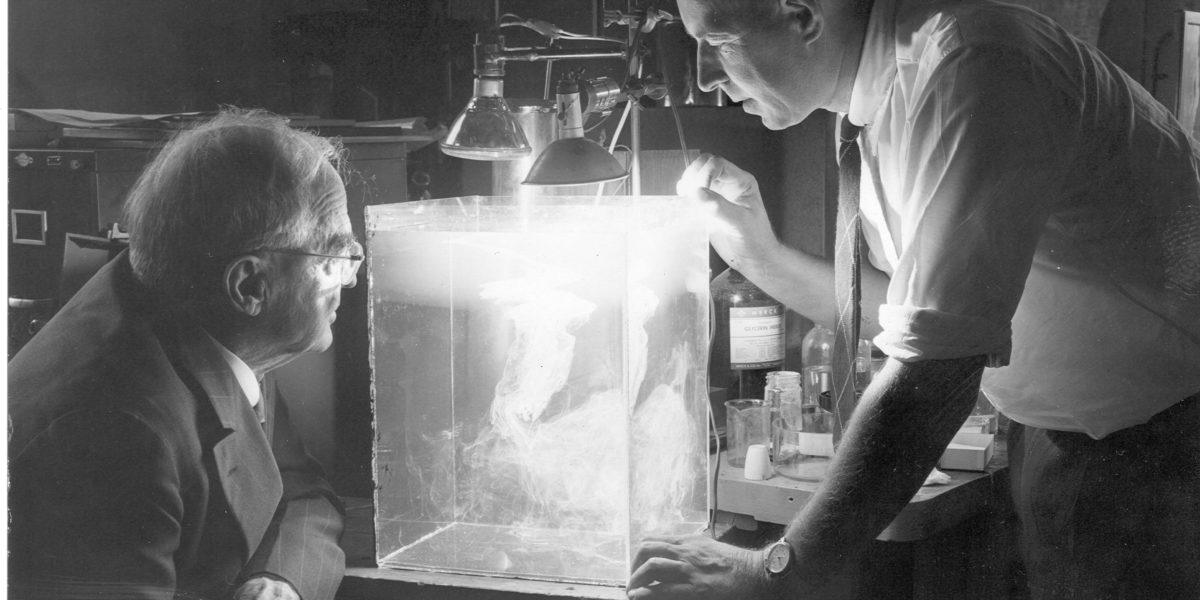
From 1850, newly discovered evidence of a prehistoric ice age in Europe led to a widespread debate about the potential causes of climate change. These discussions reinforced the idea that human activities could change the climate. A rock-solid belief in the power of technological progress became widespread.

The Great Holiday Exhibition
From road maps by the ANWB and the iconic Kip caravan to the pier in Scheveningen and bikinis on the Costa del Sol, The Great Holiday Exhibition takes you through the design history of the Dutch tourist.
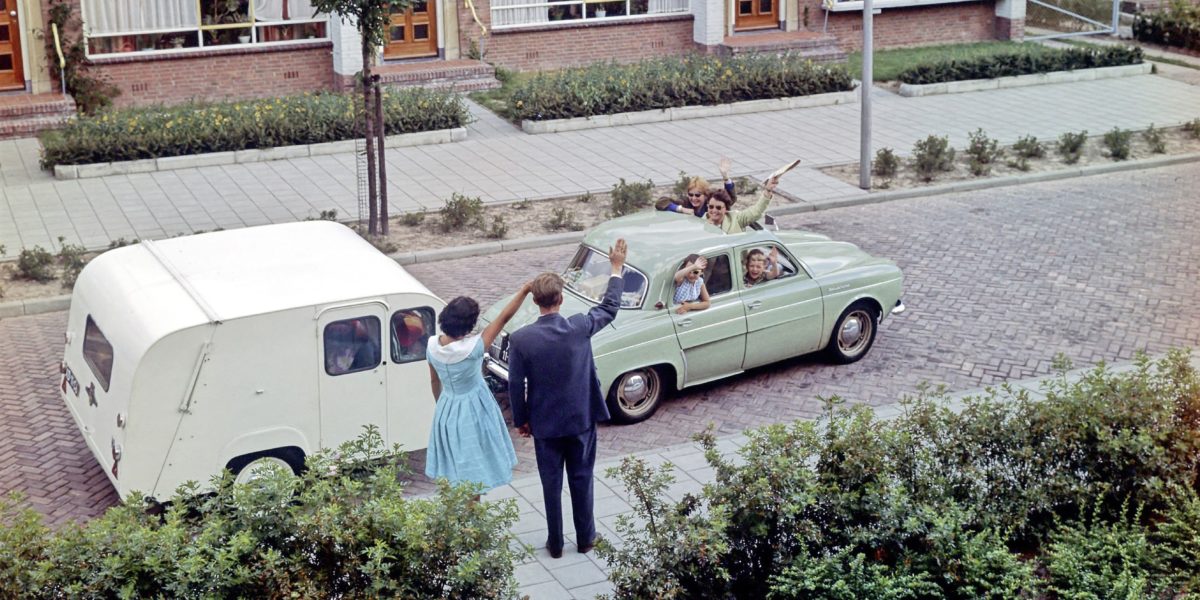
We’re delighted that you’re thinking about visiting us at Design Museum Den Bosch. This page has information about accessibility at the museum. If you have any questions or tips, please e-mail us at communicatie@designmuseum.nl or call us on +31 73-627 3513.
Dance – the design of a culture
Electronic dance music is the sound of emancipation. Black and LGBTQ+ communities created a musical genre that enabled them to express themselves freely. That music has since gone mainstream, becoming a multi-billion-dollar industry. Design features centrally in the development of electronic dance music. Take the equipment used to make the music, from the first experiments…

Men, women and their appliances
For decades now, our homes have been the stage for all manner of social transformations. Vacuum cleaners and washing machines eased the burden of housework, refrigerators, cookers and mixers changed the way we eat, and radio and television became new housemates. Especially from the 1960s onwards, this made our food more versatile and tasty, laundry…
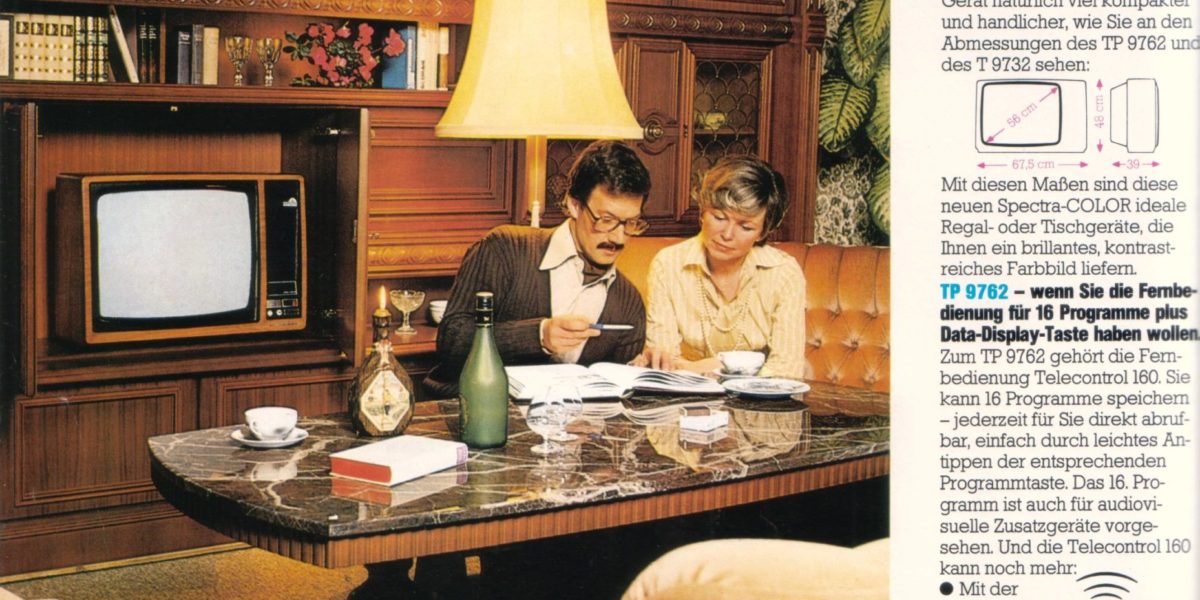
Chair, lamp, vase and… teapot?
This presentation features a selection of teapots from the Design Museum Den Bosch collection. We are showing designs by artists like Kazimir Malevich and Cindy Sherman, colourful teapots by designers from the Memphis Group, and expressive, sculptural ‘teapots’ by American artists such as Robert Arneson and Adrian Saxe. Our extensive collection of household ware by…
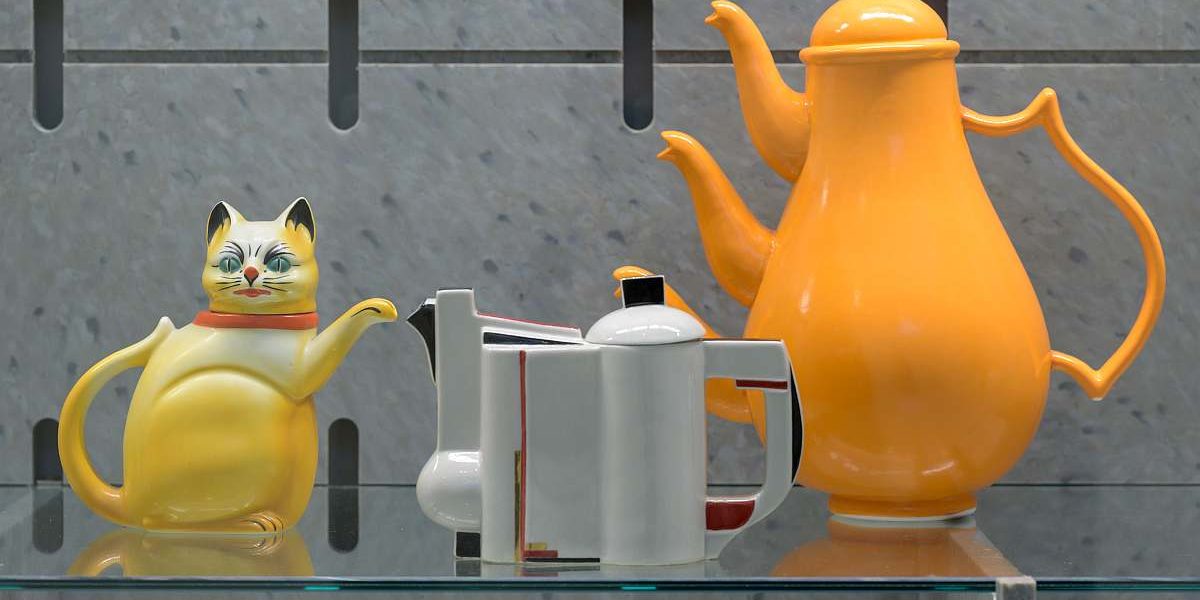
Moving in sync with nature: it can be done, it must be done Visionary talk annoys property developers, real estate moguls and investors. This map is a rough indication of what the Netherlands might look like a century from now. Jan Rotmans, Professor of Transition Science, is neither a hydraulic engineer nor a climate expert….
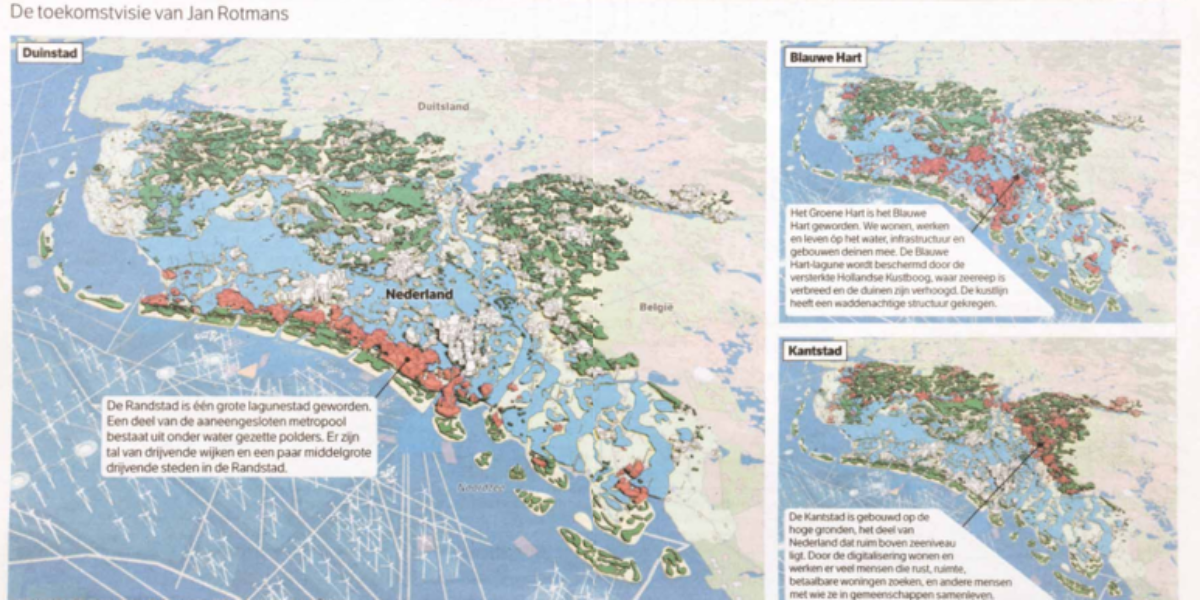
Ominous advice regarding closing off Zeeland Two days before disaster strikes, engineer Johan van Veen presents his superiors with an ambitious plan to partially dam the sea arms in the south-west of the Netherlands. A rough sketch, certainly not a technical design, but the idea is clear. The goal is in line with Lely’s plans…
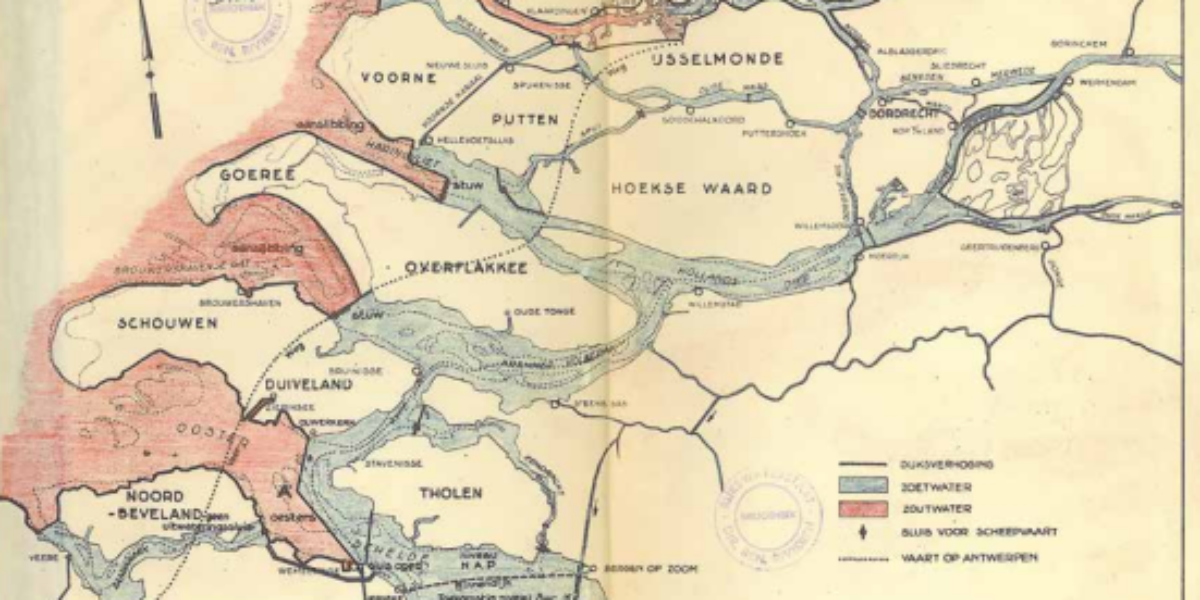
Shortening the coastline where technically possible Numerous dyke plans developed by the Zuiderzee Vereeniging preceded this design by Cornelis Lely et al. After this plan many more appeared before construction started. Lely was not only an inspired engineer, he was also a shrewd politician. During World War I, he was Minister of Water Management, and…
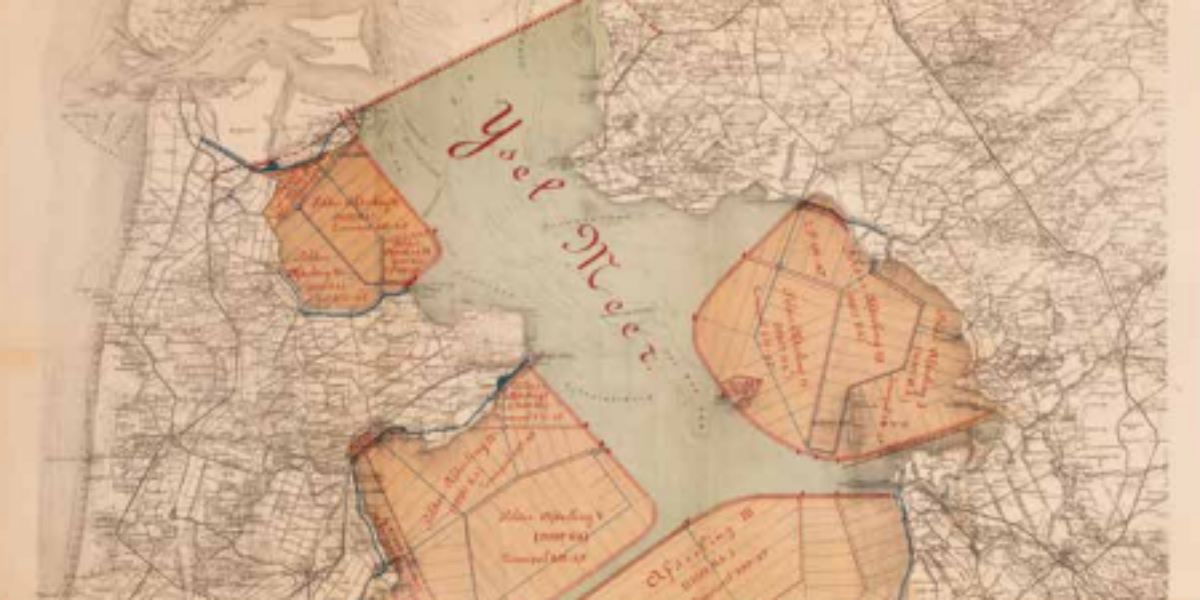
‘Modernisation’ of the natural Rhine Before modern times, the length of the Rhine is about twice as long as a straight line from city to city: the river meanders considerably and flows slowly. As a result, it offers a great deal of storage capacity, especially with so many spacious floodplains and dykes far away from…
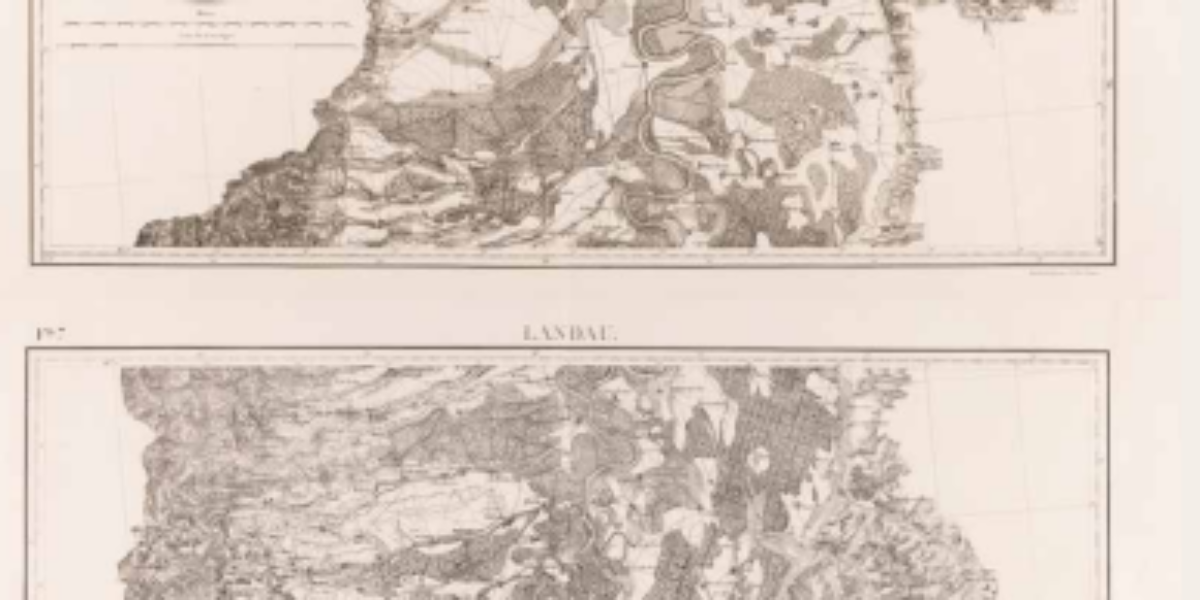
The Rhine River basin This elevation map of the Rhine River basin still shows national boundaries, but from a water management perspective, we need to look at the entire river basin. The Netherlands is heavily dependent on Rhine water, when it comes to quantity as well as quality. The melting of Swiss glaciers affects the…
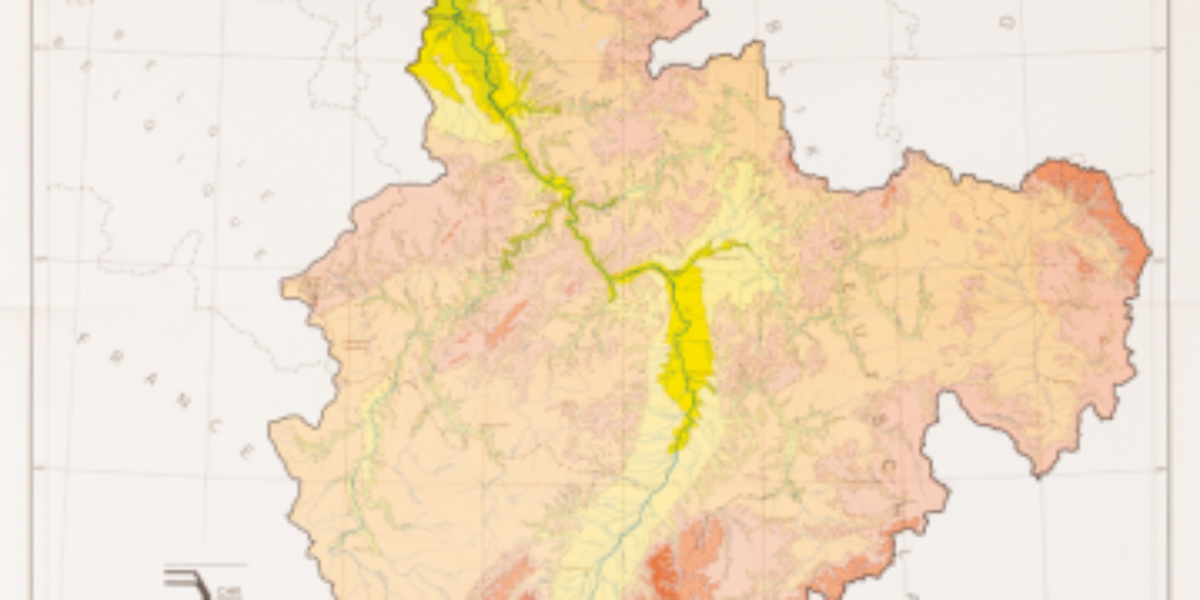
Refugee camp as a city in the making Camp Domiz in northern Iraq is home to nearly 60,000 Syrian Kurds who have fled. They expected to return soon, but most of them have been there for years. The camp has twelve neighbourhoods packed with tent houses, two hospitals and seven schools. The community abides by…
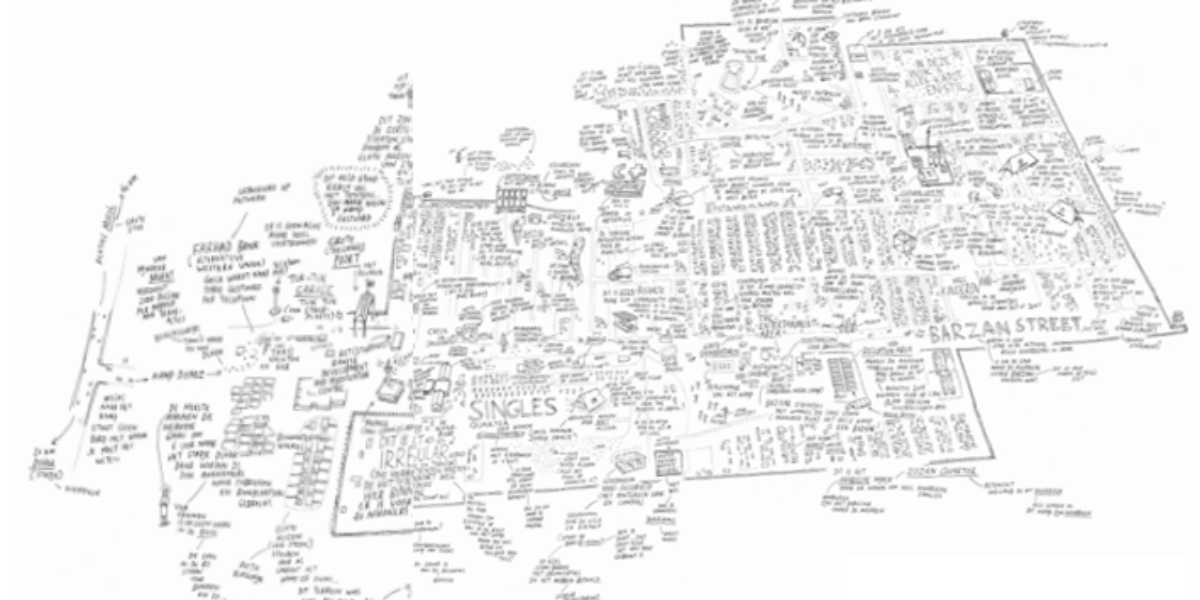
The first Corona pandemic? Not only people and animals travel around the world – germs do, too. In May 1889, doctors discover a mysterious lung disease in Bukhara (Central Asia). Pneumonia and headaches are the main symptoms, and some patients also complain of loss of taste and smell and extreme fatigue. In the first months,…
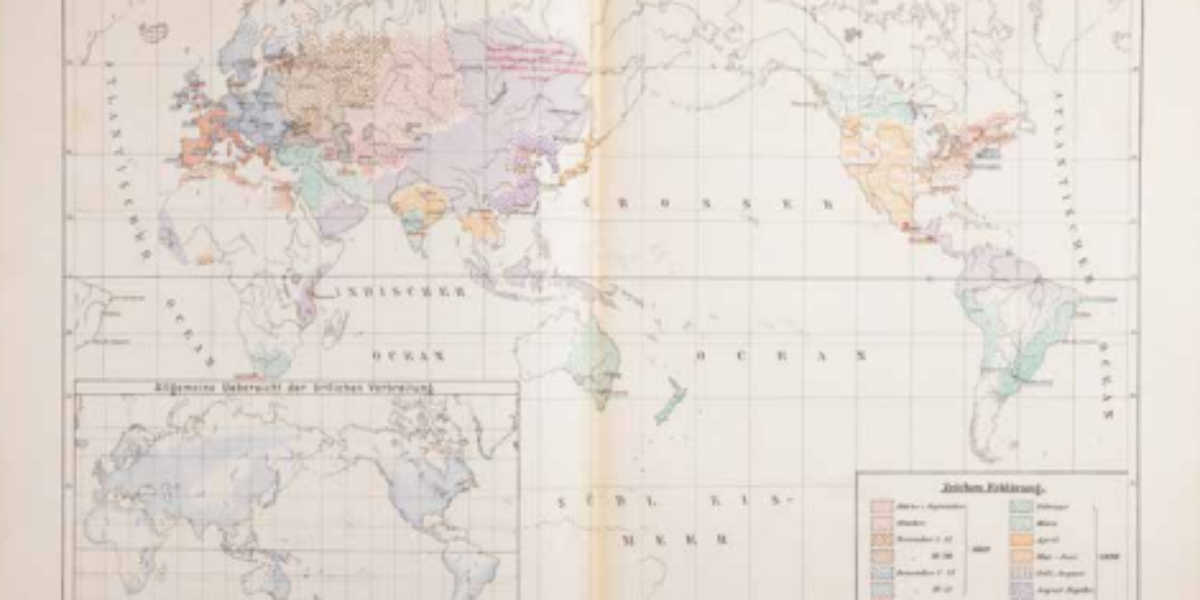
Safe travel navigating by the constellations: Japan This hand-tinted map was originally harmonica-folded but has been pasted and fitted with sidebars for the purpose of protection. You can see mid-19th century Japan, shortly before American gunboat diplomacy forced the country out of its isolation. This is a ‘dochuzu’, a road map with compass indications for…
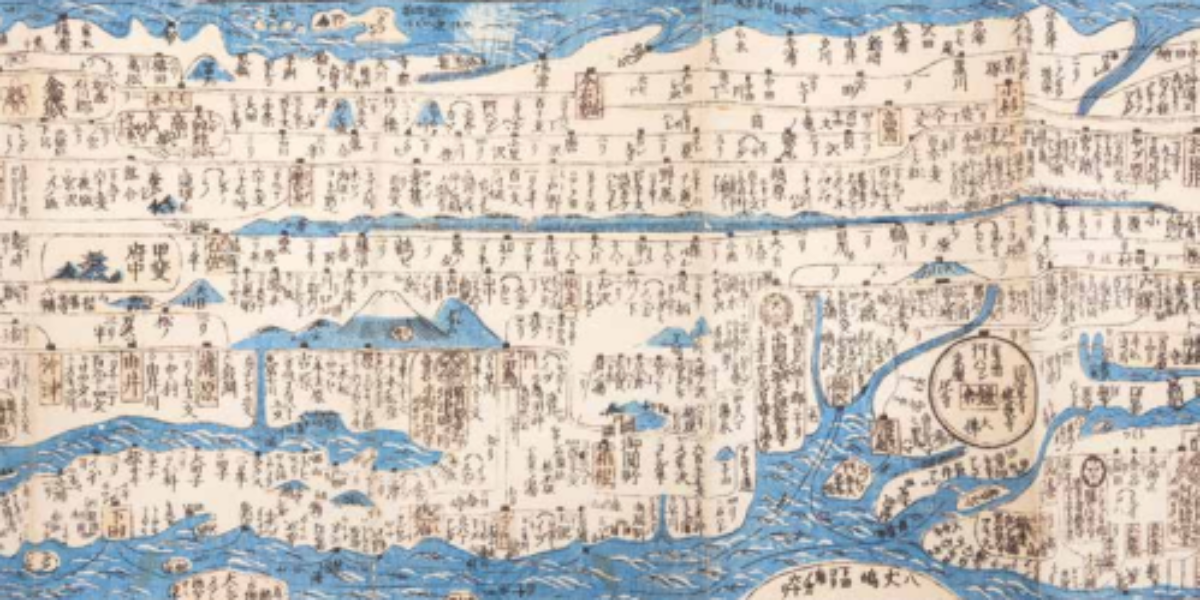
Mass tourism begins on the Rhine During the Napoleonic Wars, the Middle Rhine is already no longer seen as a border, but the romantic subject of German song. After Waterloo, English painters such as Turner and poets such as Lord Byron create legendary impressions of the Rhine in images and words. In May 1827, two…
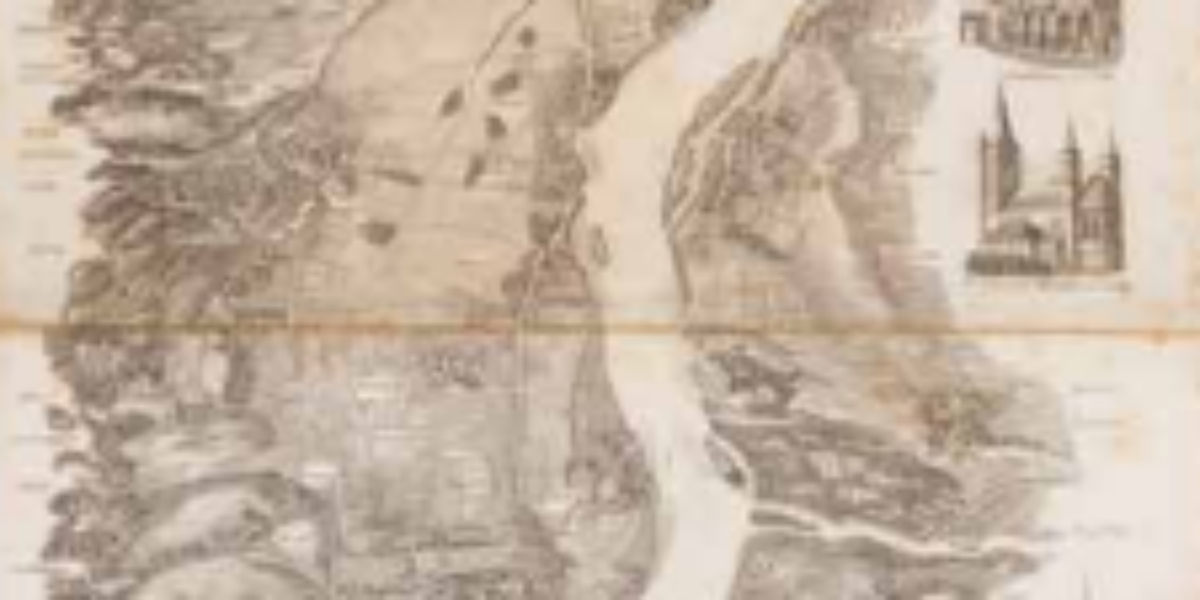
Just time zones This fascinating digital map from the ‘Cartographers without Borders’ website delineates global time zones. Since 1972, the modern time standard (UCT) has been based on an atomic clock attuned to the earth’s rotation. The UTC is the successor to the Greenwich Mean Time (GMT) and differs from this by no more than…

Occupy Wall Street When the credit crunch causes house prices to plummet and forces millions of people default on their mortgages, Wall Street threatens to crash in the autumn of 2008. To prevent another – by now global -economic crisis, Bush and Obama organise a huge investment bank bailout. However, shifting the cost of the…
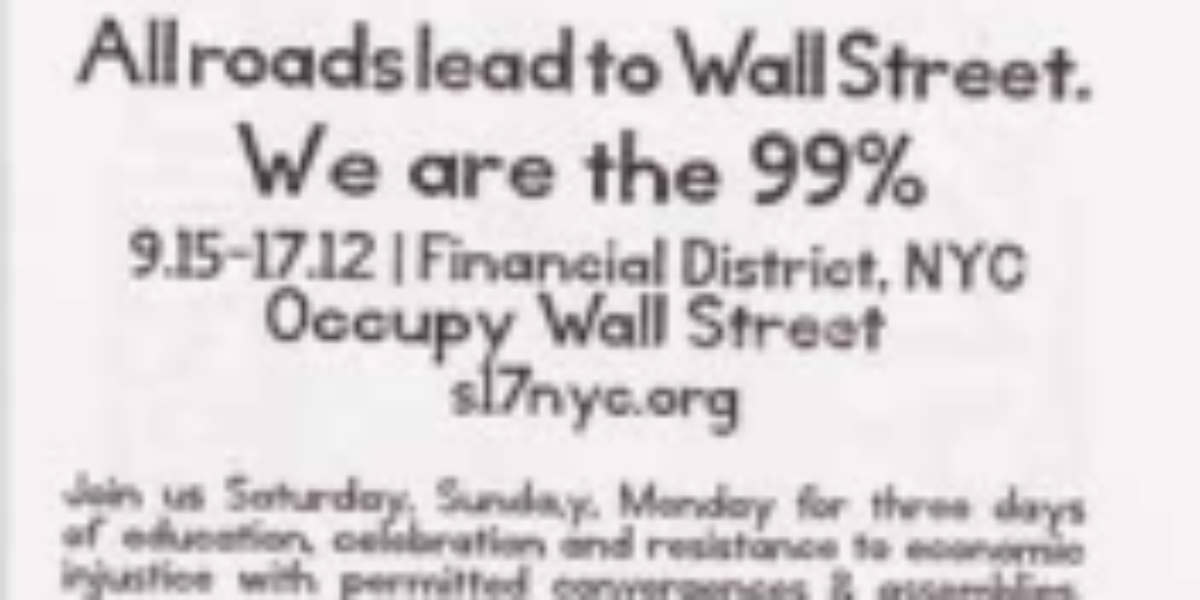
The world of IT&T Scientific illustrator Edes Harrison plays a key role in developing cartographic perspectives that radically change everyday spatial concepts while America emerges as a superpower. This distance-focused twopoint map projection presents the entire world from two centres, places at the same distance from the centres always lie on one circle. Here, the…
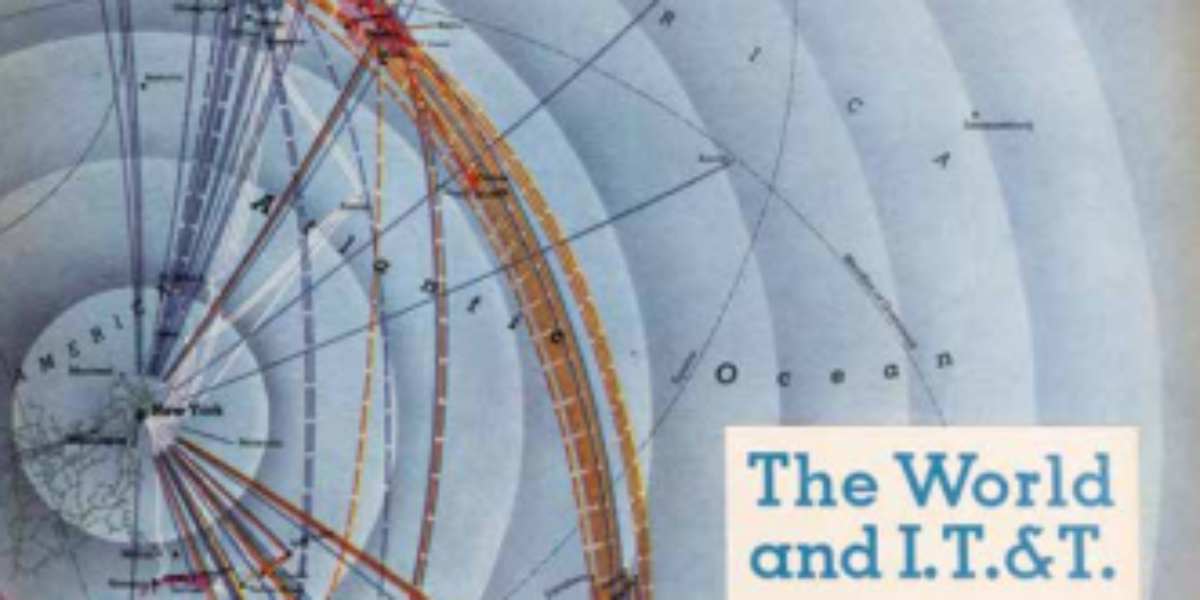
Official map of the Suez Canal This rare chromolithographic map of a waterway without locks (the thick red line) through the isthmus between Port Saïd and Suez appears three years before the grand opening of the Suez Canal. A publication of the responsible joint-stock company,it is intended to promote the modern mega-project and is to…
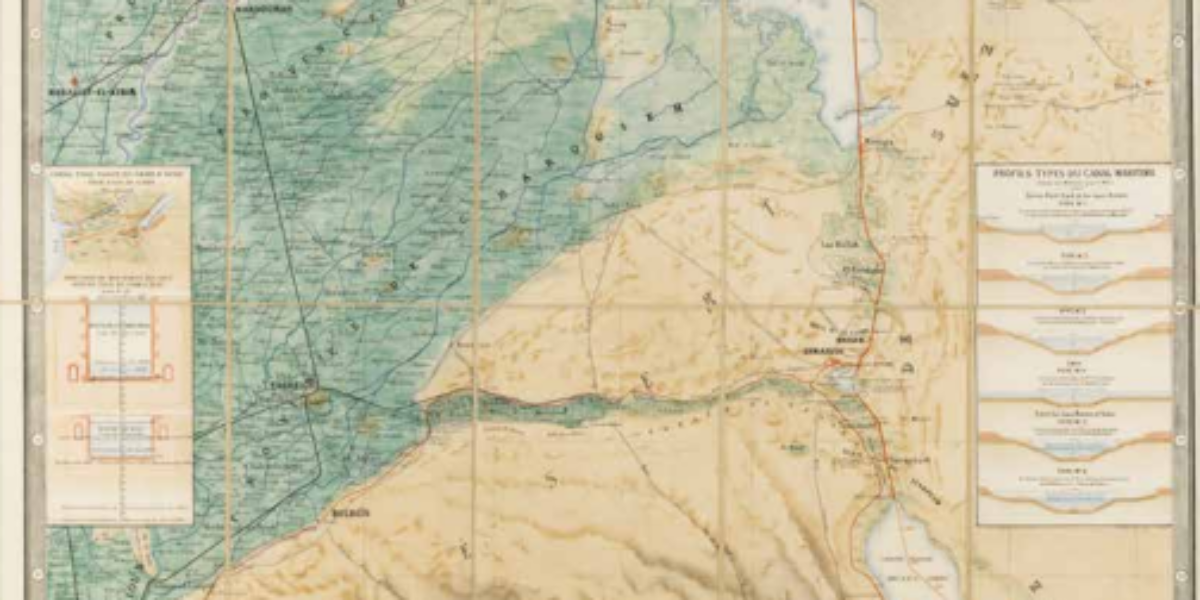
First modern map of Overijssel In the nineteenth century, unmeasured and undescribed places not only disappear from our world maps, but the interior is also increasingly mapped. Based on triangulation of our country by Kraijenhoff and systematic mapping by the Cadastral Registry, accurate provincial maps were made at the insistence of the Minister of the…
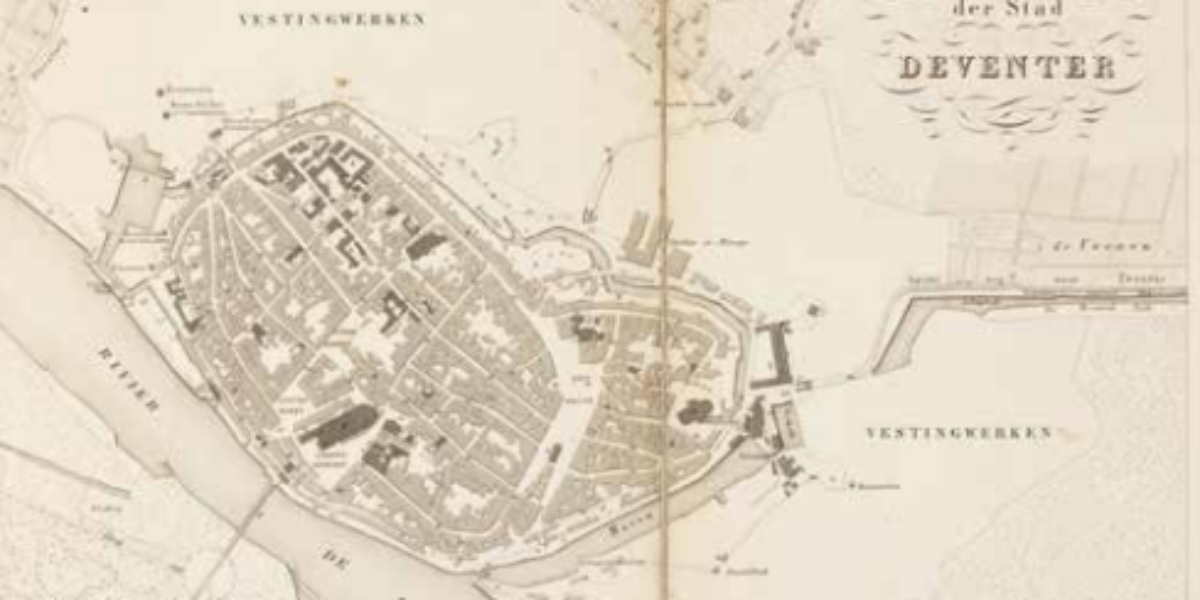
Most commonly used cards: coins We pay less and less with it, but even our coins have a map. The five-euro cent shows a globe with Europe in the centre. The fifty-euro cent shows the European Union, regardless of whether countries have adopted the euro, and the two-euro coin shows all of Europe, including Norway…
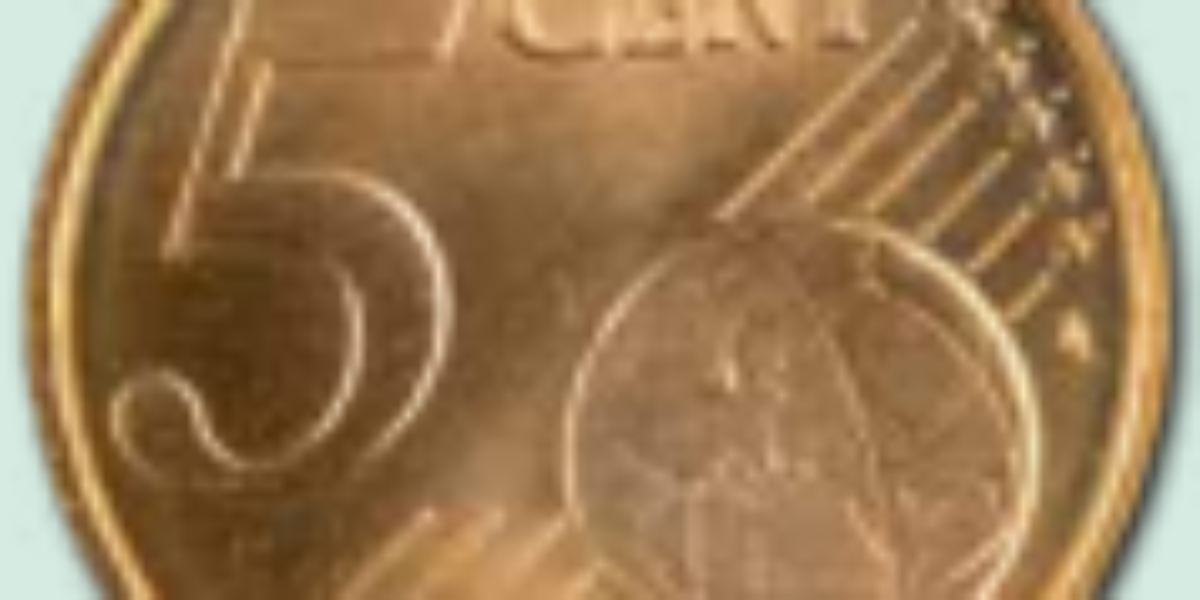
Soviet maps of Dutch cities Immediately after World War II, Stalin orders the world and all countries and relevant cities to be mapped. It is the largest cartographic project ever. Almost all larger Dutch cities are mapped in scales 1:10,000 or 1:25,000. The maps are still ‘secretno’, secret in Russia. Dordrecht and Maastricht are depicted…

Threatening nuclear attack on Western Europe This Polish-language training map for a large-scale attack from the east was made public in 2005 from a Polish state archive. The plan of attack involves throwing ‘tactical’ nuclear bombs at Western Europe, but not at the nuclear powers UK and France. Called ‘tactical’, those bombs are up to…
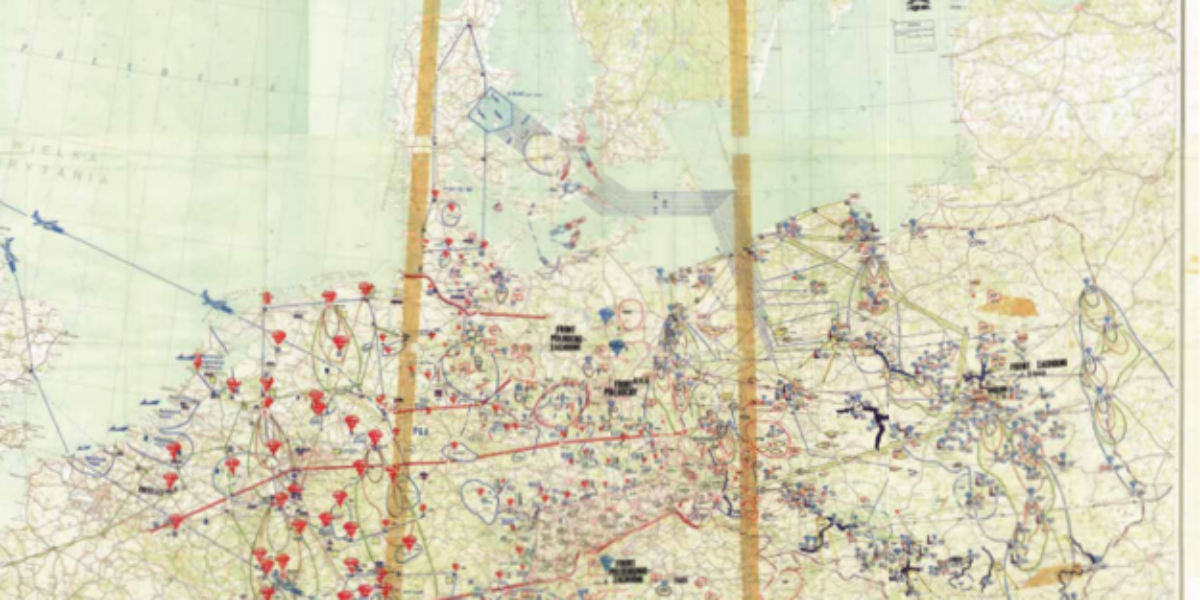
Berlin lifeline during land blockade This propaganda leaflet with cartographic infographics shows how an airlift negates the land blockade of West Berlin by the Soviets in 1948. The leaflet visualises the logistical operation required to provide people, food, fuel and building materials for 2.5 million West Berliners get to their destinations by plane. When this…
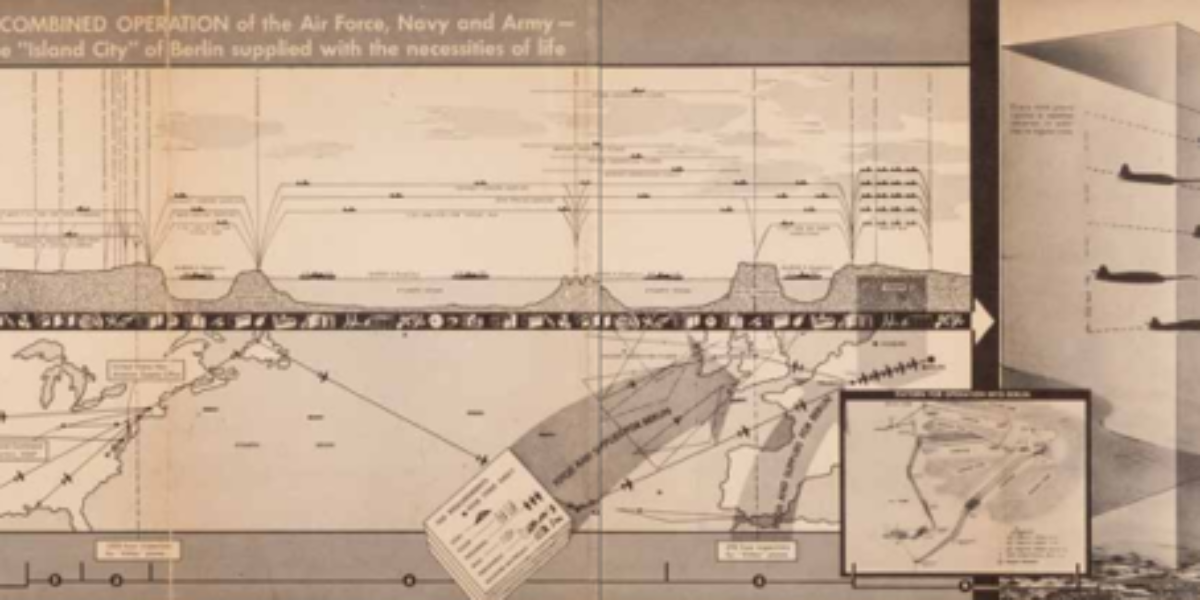
German peasant soldier colony Reichskommissar Himmler puts SS and Polizeiführer Globocnik of Lublin District in charge of the Germanic colonization project in the region around Zamosc, currently in south-eastern Poland. After the Jews had been deported, some 110,000 Poles and Ukrainians in 294 villages are arrested and racially selected between November 1942 and August 1943….
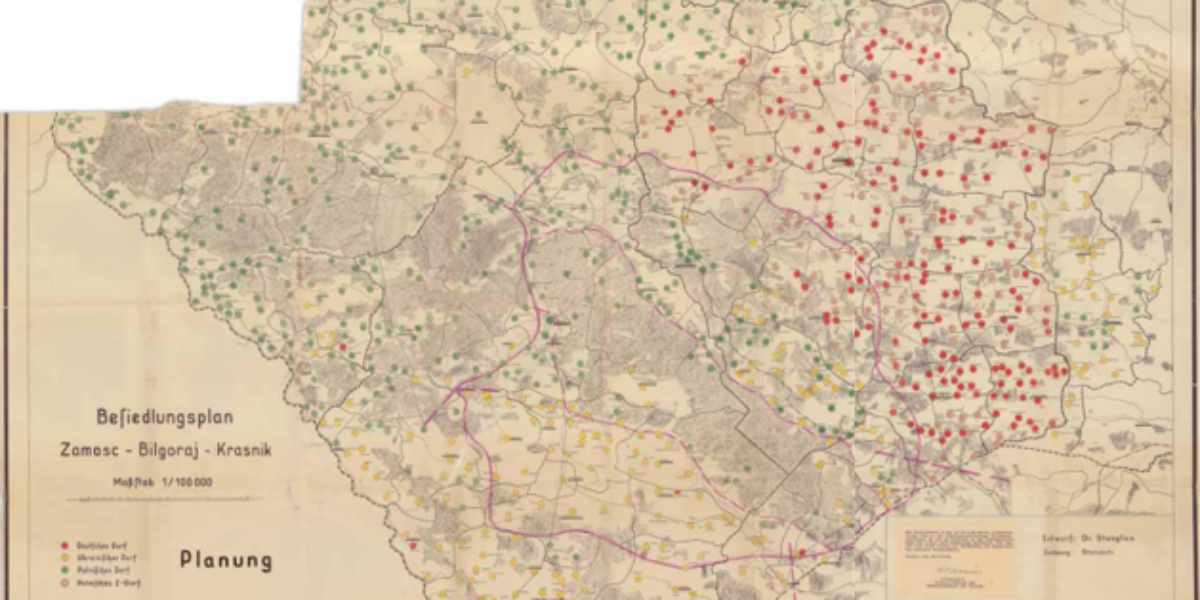
The Warsaw ghetto Around November 12, 1940, ‘SSSturmbannführer’ Max Jesuiter traces the area for a new Jewish ghetto on a secret military map of Warsaw, in purple pencil. The plan stems from an ordinance by the German governor, but the erratic borders result from quarrels between Jews and Poles over living space allocated to them….
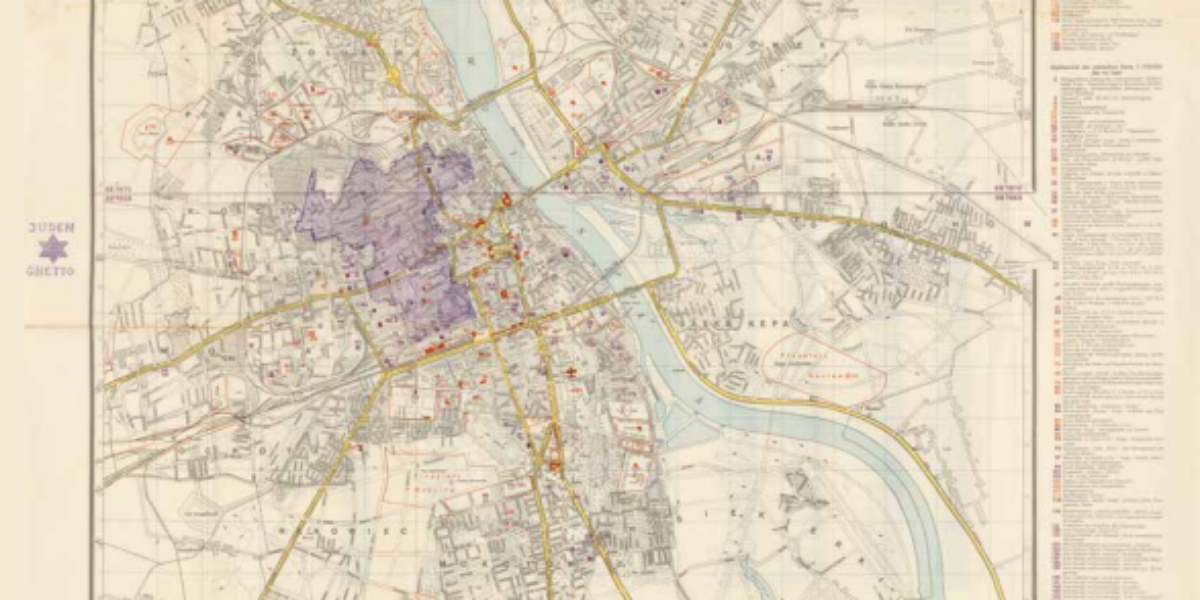
Each dot = ten Jews In January 1941, Hans Böhmcker, ‘Beauftragter des Deutschen Reiches’ for Amsterdam, demands an inventory of the distribution of Jews throughout the city. Within ten days, twenty officials have prepared a first overview. After this, the municipality collects additional data on the Jews. In May 1941, 85,897 Jews were settled in…
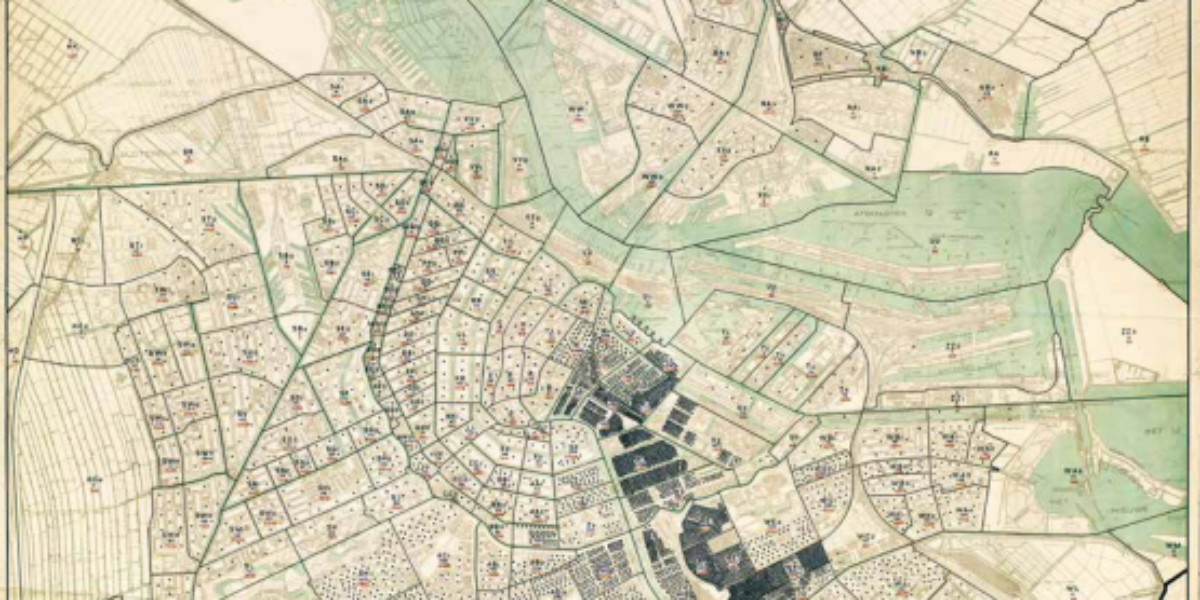
Old and new Europe These National Socialist maps were specially created for the ‘Autobahn und Wasserstrasse’ exhibition for Danube vassal states, organized by Reich Minister Todt (Armaments and Ammunition) in Budapest, Belgrade, Sofia, and Bucharest in 1942. On the left we see ‘Old Europe’, with its rivalling nation-states in a variety of colours. The British…
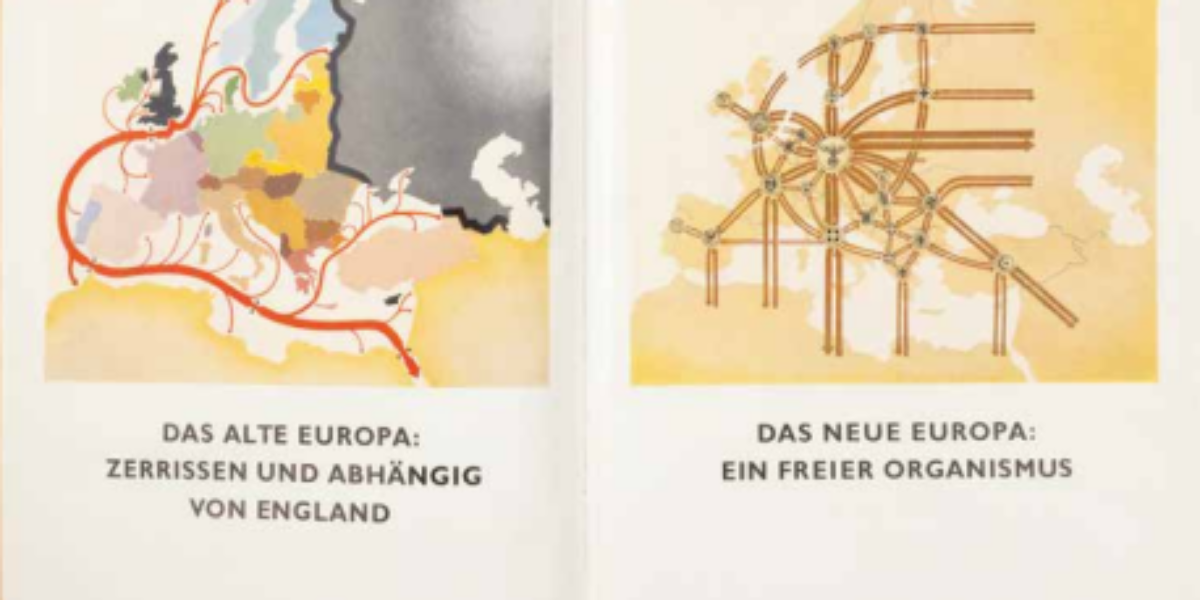
Second atomic bomb destroys Nagasaki This sober report analyses the effect of the atomic bombs on Hiroshima and Nagasaki (6 and 9 August 1945) compared to ‘ordinary’ bombings of other Japanese cities. ‘Nagasaki’ was less effective than ‘Hiroshima’ due to the hilly terrain, but the overall effect turned out to be greater, owing to the…
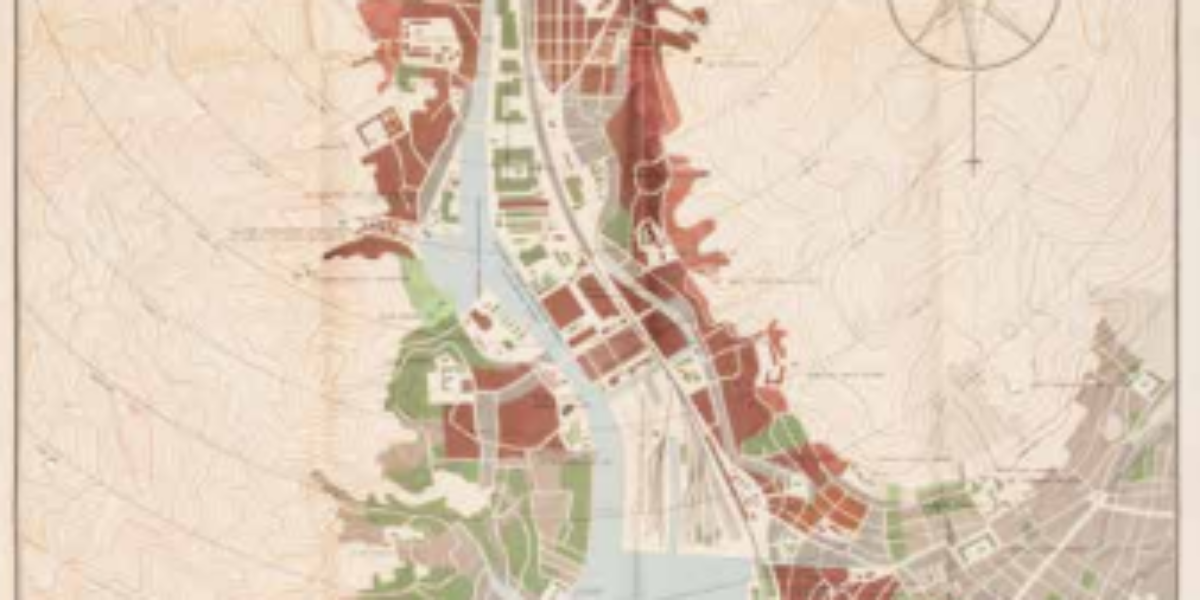
Destruction and fall of Berlin This extensively restored working copy belonged to Major General Safaryan, commander of the 89th Armenian Infantry Division, and is part of his estate. The map shows the division’s progress during the Battle of Berlin in April 1945. The division attacks from the north (Wilhelmsruh) and is the second division to…
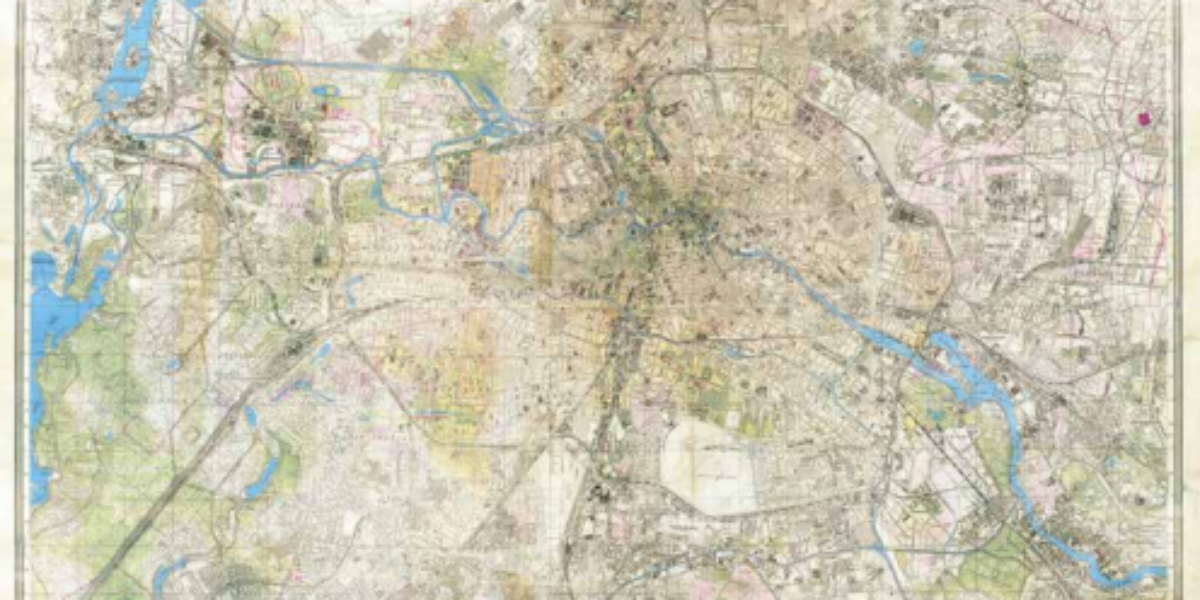
Hollywood-inspired ‘debriefing map’ Four large sheets depict a US division’s participation in the Allied advance following D Day. The beautifully designed frame tells the story of the 79th division. This starts at training camps in the United States and England and depicts each of the places the division passes through. In addition, special actions are…
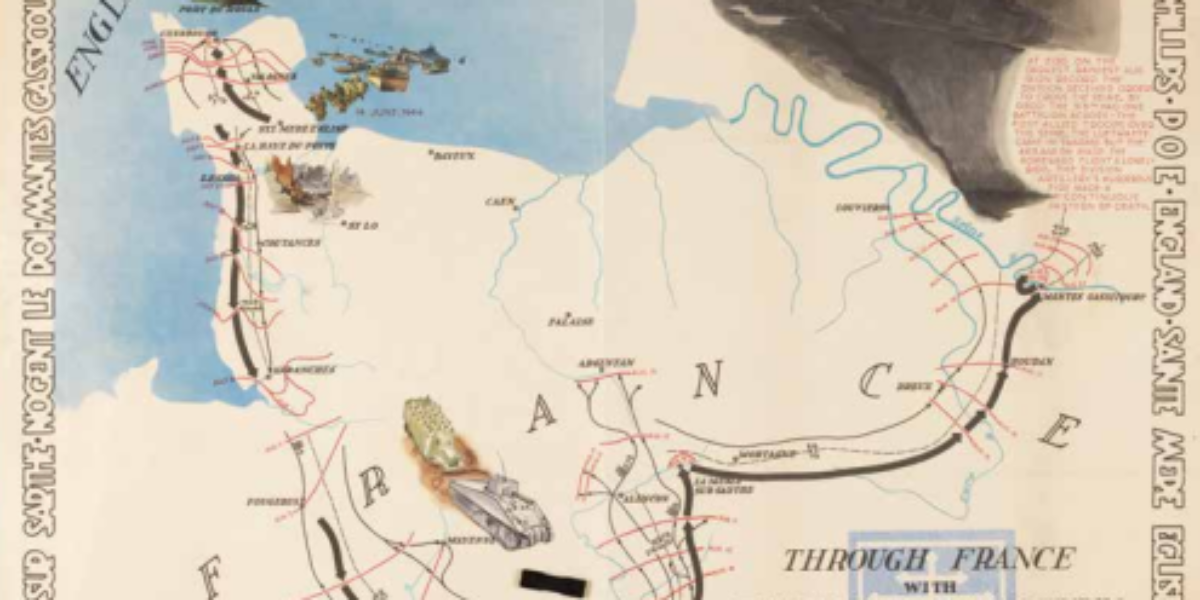
War success as publicity War has always acted as a catalyst for technological innovation. With this in mind, the US developed a more efficient fuel that enhances flying range. This ‘super fuel’ has a higher octane rating, which means greater ‘flying horsepower’, speed and payload and increased range, without requiring a more powerful engine. B17s,…
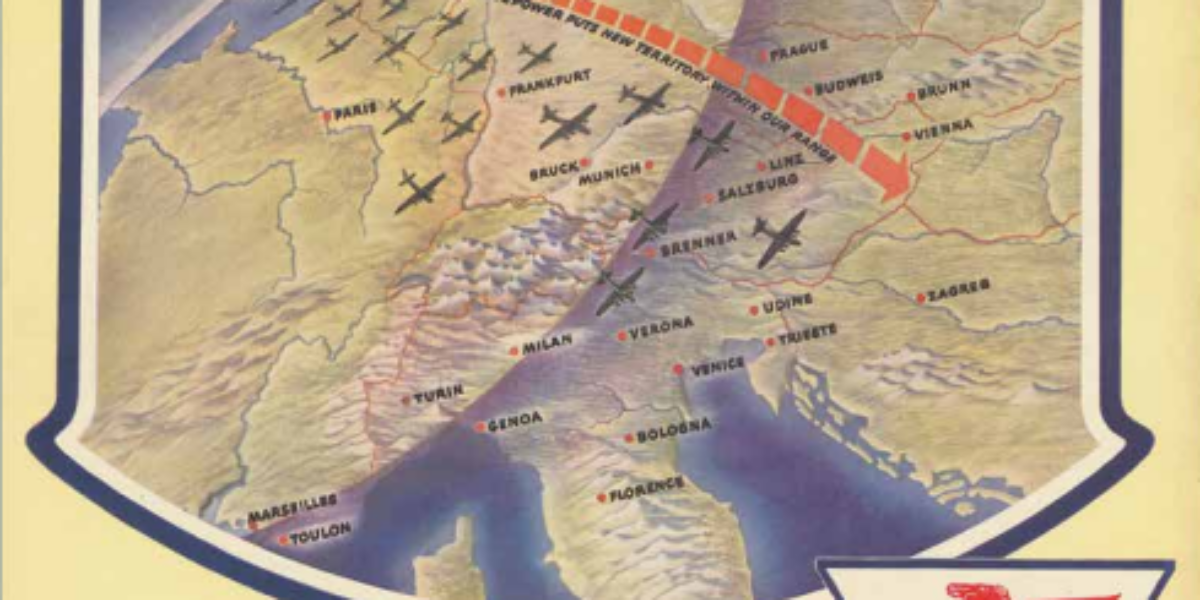
Cheerful ‘Rollbahn’ to Moscow In January 1942, the Wehrmacht propaganda department authorises publication of this map and an accompanying book of photographs. The map has a cinematic, fresh, and cheerful appearance, but the consequences of the war on show are gruesome. During Operation Barbarossa, the Ulmer division advances to invade the Soviet Union, part of…
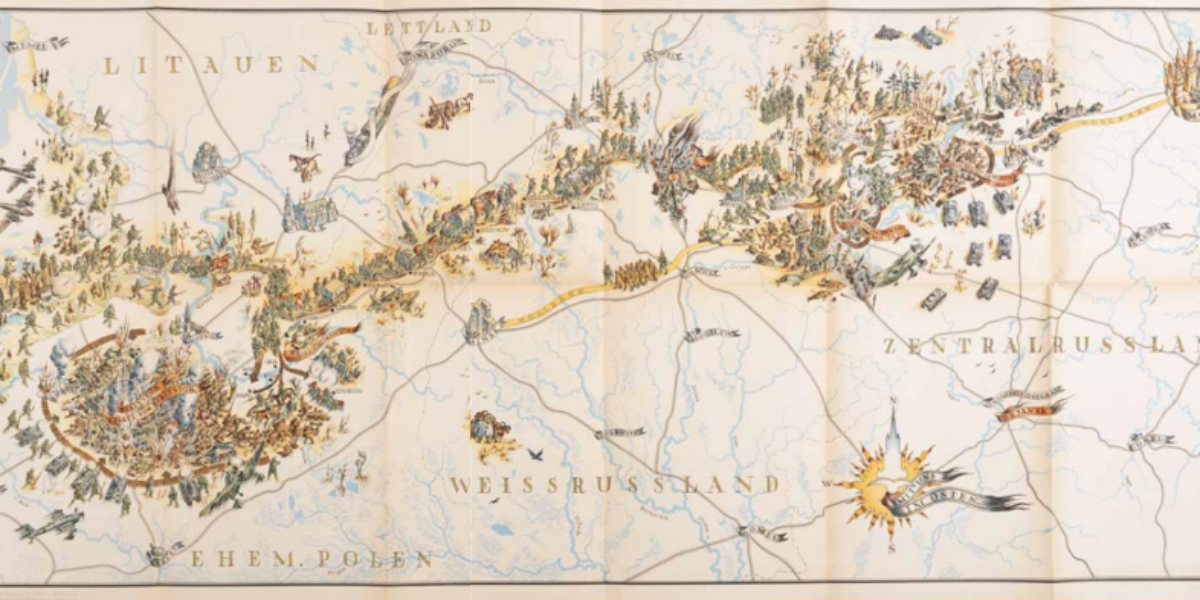
Tokyo as modern design Even when using the smartest design methods to schematise underground and overhead rail networks, representing rail lines of the world’s largest metropolises results in a practically illegible jumble of lines. This is a schematic map of almost all public heavy rail transport in the Greater Tokyo area: a mega-metropolis of 35…

Paris: modernity versus revolution On the initiative of Napoleon III, France’s last monarch, Georges-Eugène Hausmann, capital prefect, modernises the Paris urban structure and street layout. Napoleon III personally sketches the designs for this. At the time of this map’s publication (1867), the work is largely complete. The city is seen as a living organism where…
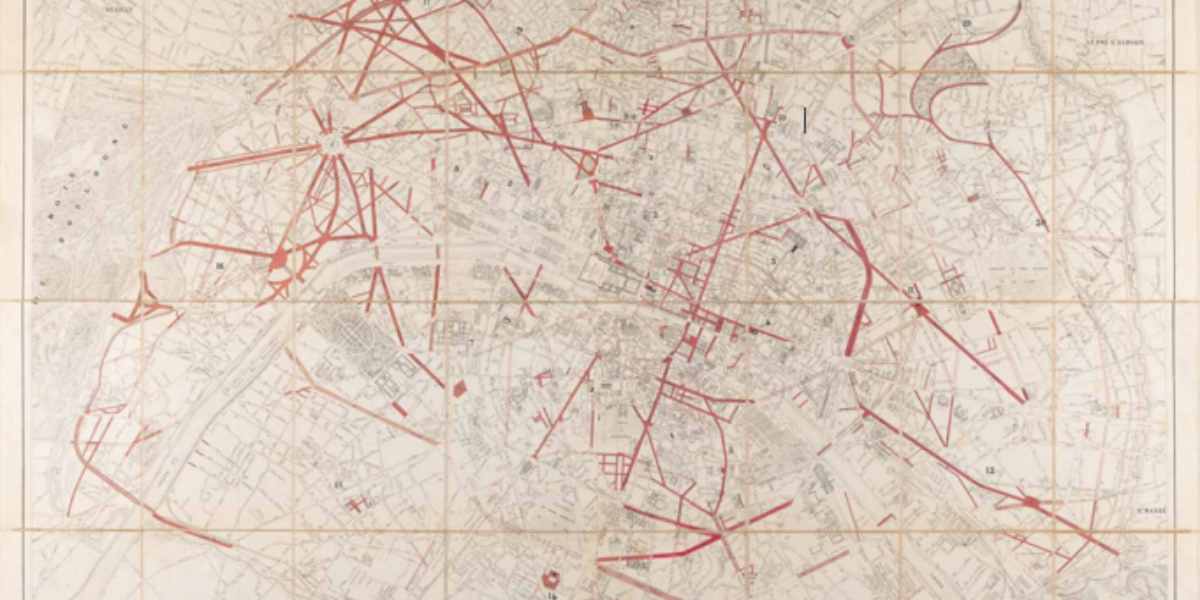
Waterline hinders expansion of Utrecht Hein Berlage is commissioned to design an expansion plan for Utrecht, together with director of Public Works L.N. Holsboer. At the time, Berlage has become renowned as an acclaimed urban planner. Utrecht is located near the Nieuwe Hollandse Waterlinie, an 85-kilometre stretch of forts, castles, and strongholds. The duo takes…
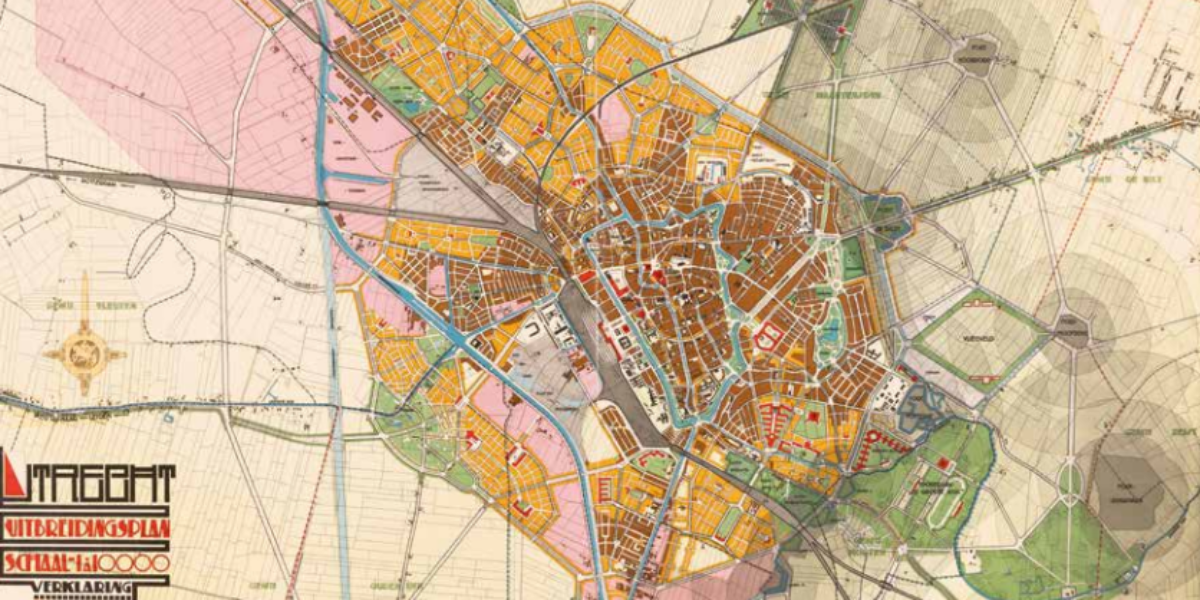
The first regional plan: IJsselmonde Commissioned by private Rotterdam investors, architectural firm Grandpré Molière, Verhagen & Kok develops an expansion plan for Rotterdam’s south bank in 1921. The Netherlands’ first ‘regional plan’ includes the entire IJsselmonde island. Space is needed for intensive industrialisation and working-class districts, as well as for heavy infrastructure, greenery, and recreational…
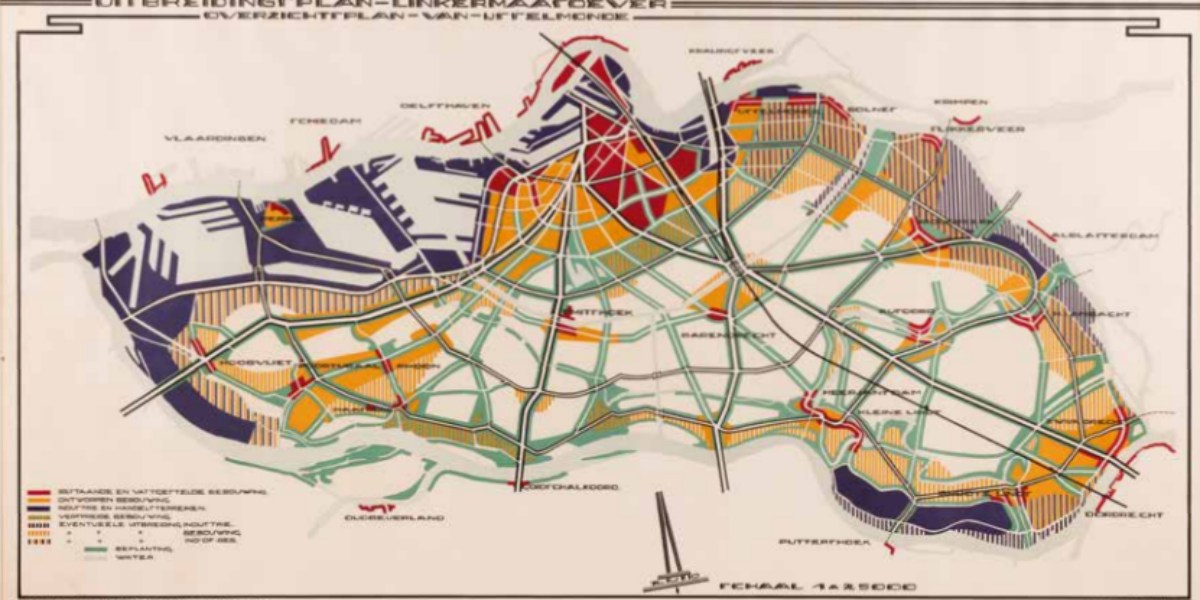
Amsterdam as a functional city Urban designer Cornelis van Eesteren has a significant influence on urban development in the Netherlands. In 1929, he became Director of Amsterdam’s Public Works Department, where he developed the Algemeen Uitbreidingsplan (General Expansion Plan) with Th. van Lohuizen. His approach to designing and drawing is strongly influenced by the ‘Congrès…
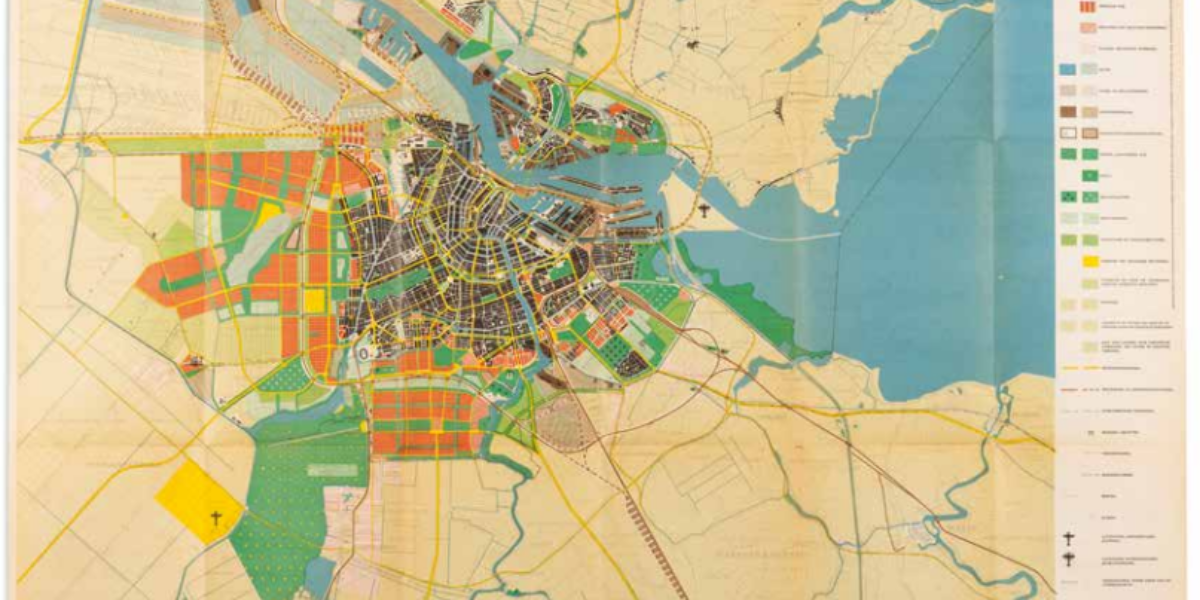
Chinese re-education and punishment camp On the road to Ghulja, a city in China’s Xinjiang autonomous region close to the border with Kazakhstan, lies one of 381 (!) internment camps where mostly Uyghur Muslims are ‘re-educated’. The map shows Camp Mongolkure as the crow flies and was made for the installation ‘Investigating Xinjiang’s Network of…

Bipolar Chinese world map This vertical world map puts Europe as an appendage of Asia. North America is upside down and cut off from South America, and Africa is eccentric. Here, the ‘Middle Kingdom’ and the Indian Ocean take centre stage. Indeed, around this is the focus of the ‘Belt and Road Initiative’, the largest…

Coca-Cola conquers the world Boris Artzybasheff is known for his surreal illustrations in popular American magazines. This drawing on the cover of Time Magazine, showing Coca-Cola giving a happy baby globe its bottle, accompanies an article about the marketing strategy this ‘company’ uses to conquer the world. Coke bottlers travelled with the US armies during…
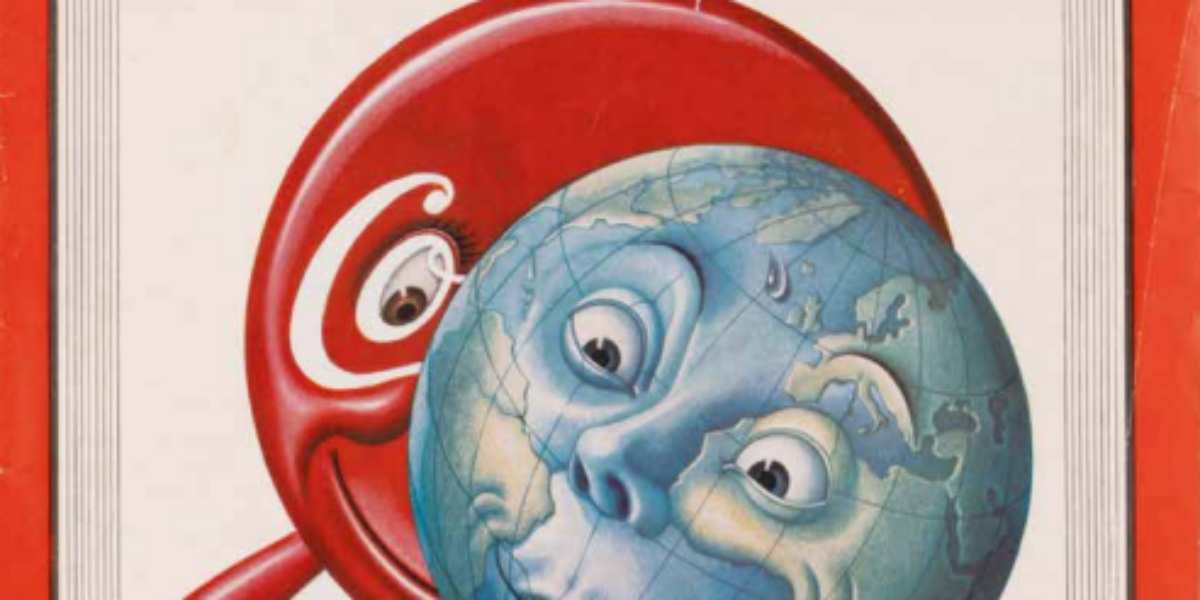
Istanbul and the Bosphorus This rare staff map is, as the colophon states in Ottoman-Turkish, from the Printing Office of the United Chiefs of Staff. Only late in the 19th century did the Ottoman army adopt map techniques from France and Germany, including the standard 1:50,000 scale (1cm on the map is 500m on the…
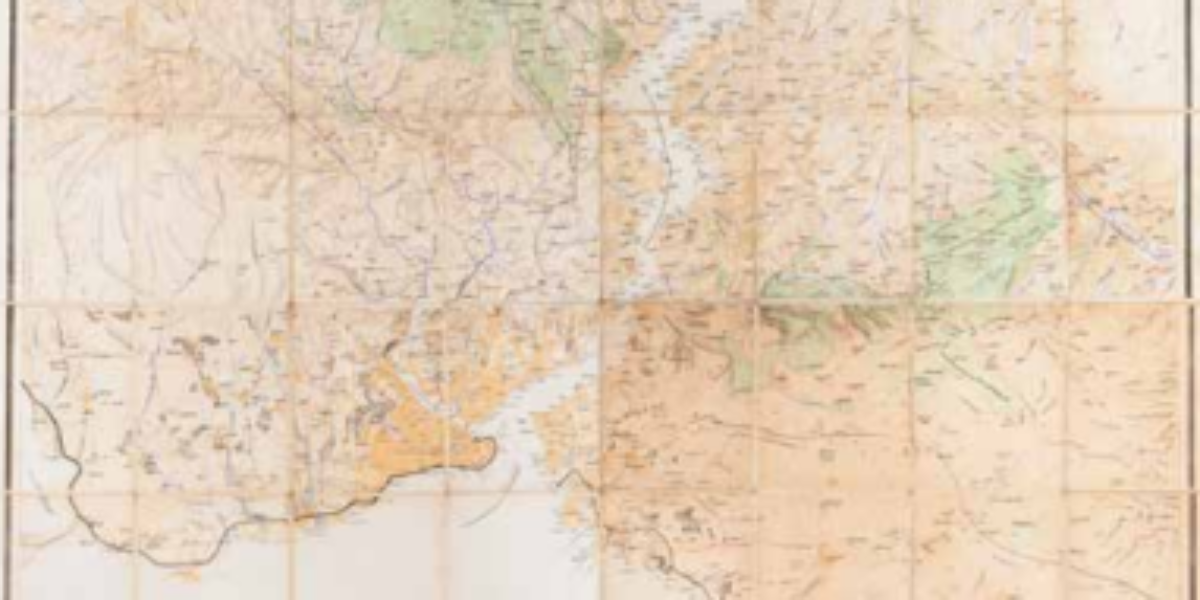
Leopold’s reign of terror in Congo In 1885, the Berlin Conference designated Congo Free State (an area 76 times the size of Belgium!) as the personal possession of King Leopold II. The map uses colours to divide the country into various concession areas. Private companies exploit raw materials here, especially rubber for the transport industry,…

From savages to enlighten This moral and political map is often reprinted from 1821 onwards, including in the School Atlas by Woodbridge and unnamed co-author Emma Willard. Geographically for schoolchildren and the general public, the atlas depicts Western superiority through a modern approach to the process of civilisation. The development from savages, through barbarians, semi-civilised…
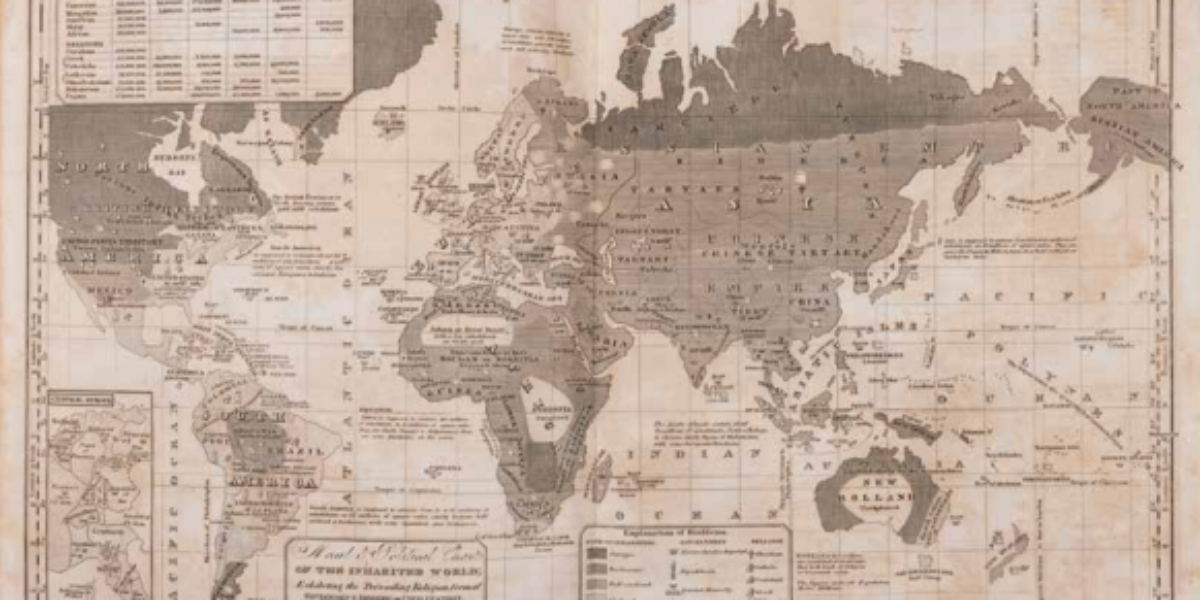
Allied and German trenches This secret map (1:20,000) from September 1918 is overlaid with German (blue) and allied (red) trenches and therefore it may not be used at the front. When Germany cleared fifty Eastern Front divisions after the Russian revolution and rapidly moved them to the Western Front, General Ludendorff managed to conquer large…
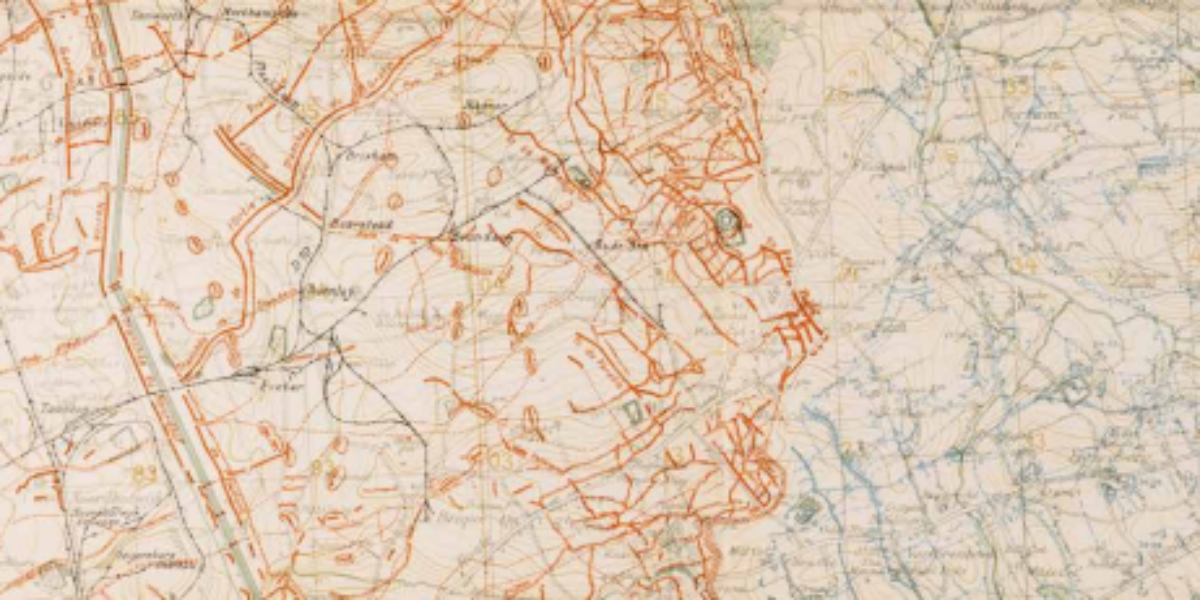
Map of Hell at Passchendaele In October 1917, new attacks in the direction of Passchendaele are prepared as Canadian, Australian and New Zealand troops reinforce the British army. The artillery is tasked with to eliminating obstacles and enemy soldiers, while firing over the heads of its own side’s infantry. All the infantry subsequently needs to…
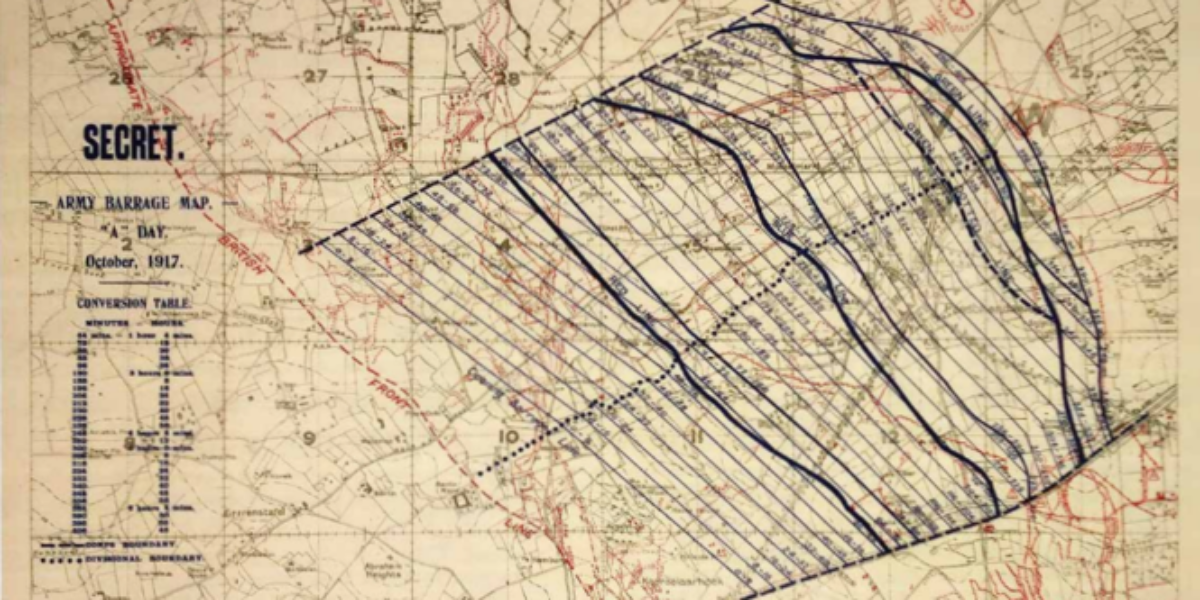
Ethnographic map of the Balkans Ethnographic maps of the Balkans show significant differences, depending on the maker and the country of origin. The choice of relevant language data (mother tongue, school language, church language, market language or official language) depends on the territorial claims that might be legitimized in this way. Especially around Ottoman Macedonia,…
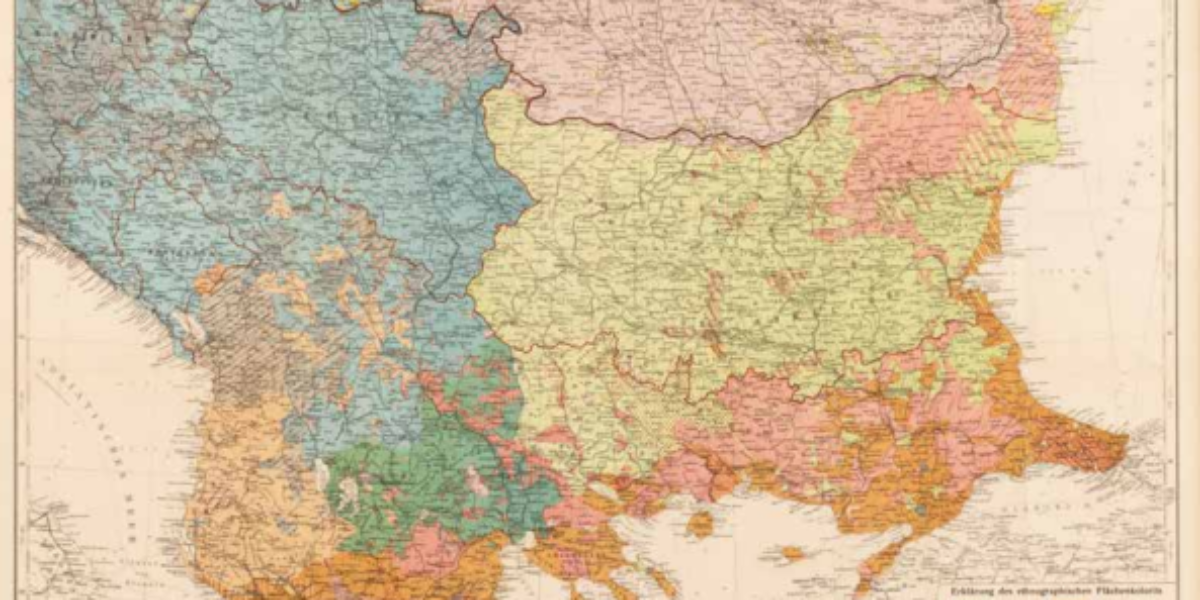
Language map of Germany In 1834, Karl Bernhardi, librarian in Kassel, suggests the creation of a language map of the German nation to national historical societies. In romantic nationalism, a people’s history largely determines the development of their national consciousness, and cultural unity can be seen in a common language more than anything else. After…
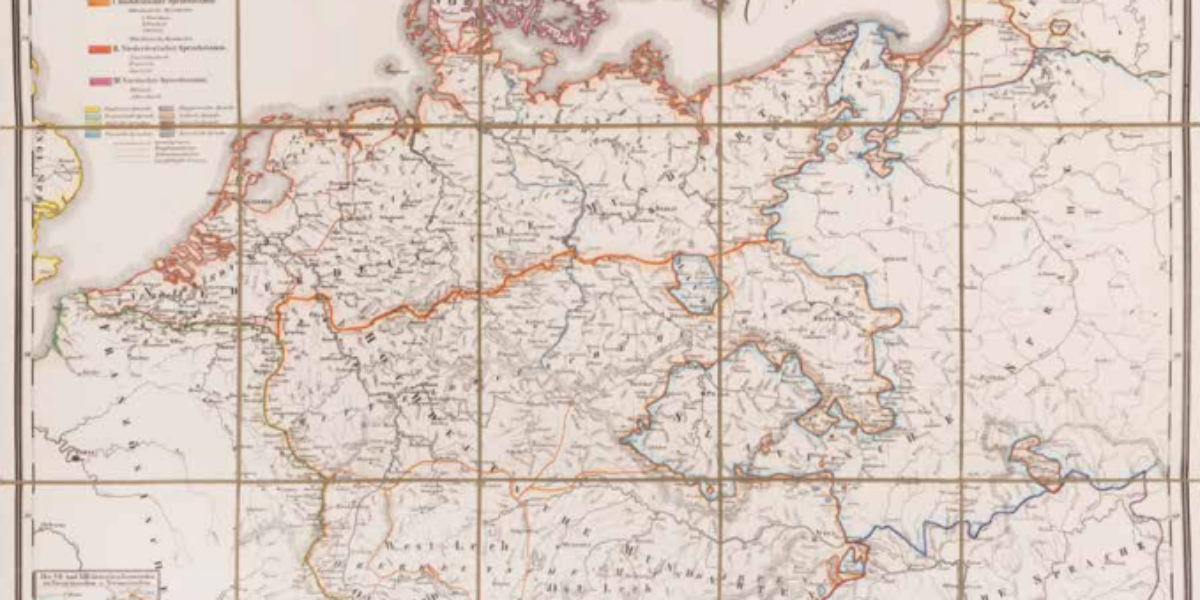
Schoolwandkaart van Nederland At the end of the 19th century, the development of lithography makes it possible to print coloured surfaces. On this school map by head teacher C.A.C. Kruyder from Zwolle, the sea is green, and the land is black. The dark, ominous look of this wall map is illuminated to some extent by…
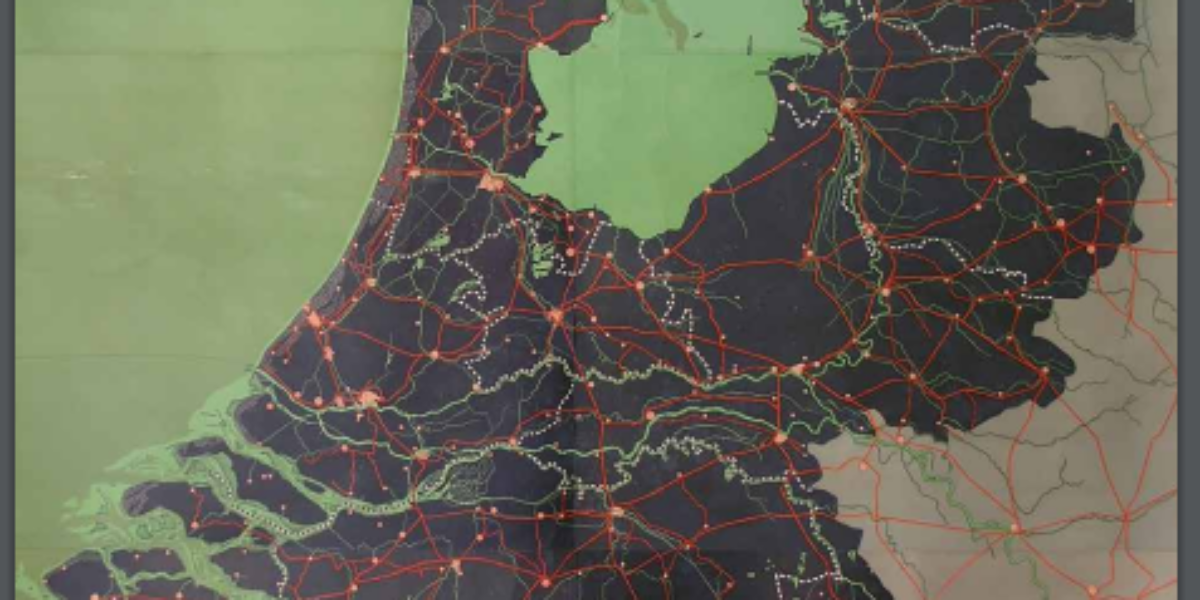
Shifting cotton imports Charles J. Minard is the founder of the infograph, an informative visual representation of spatial and statistical data on a geographical background. On these three infographics showing cotton imports in the years 1858, 1864 and 1865, Minard shows the crisis in the European textile market at the hands of the American Civil…
